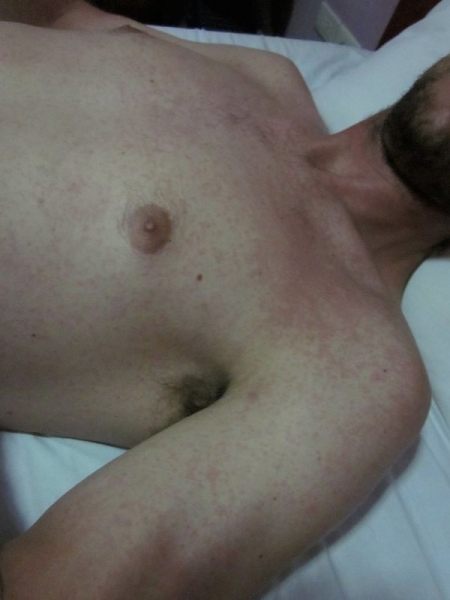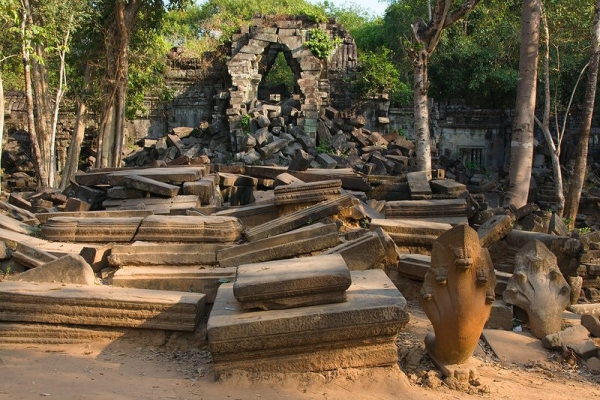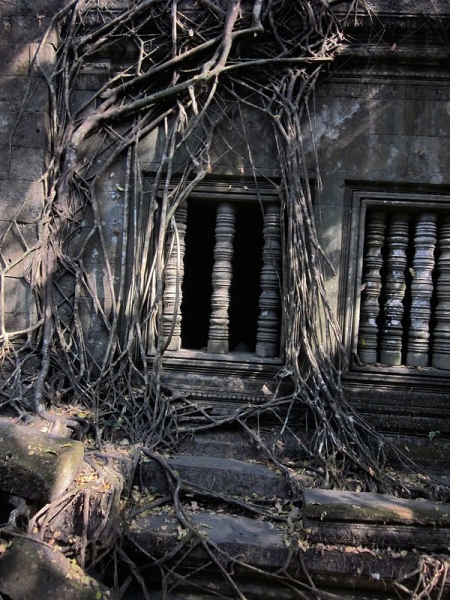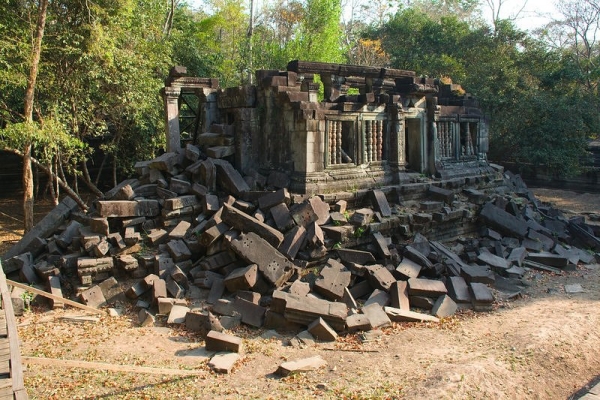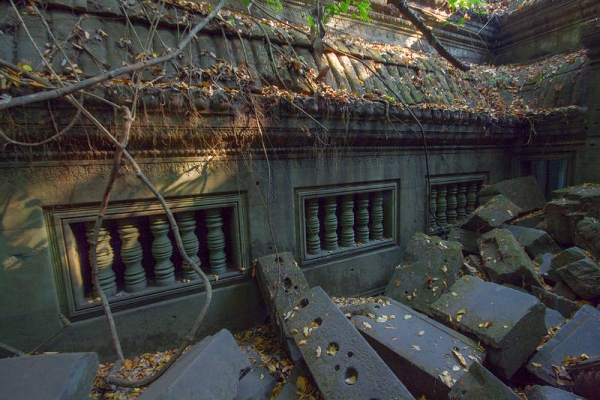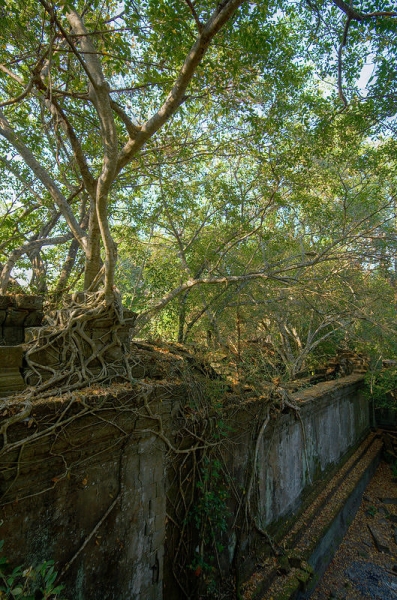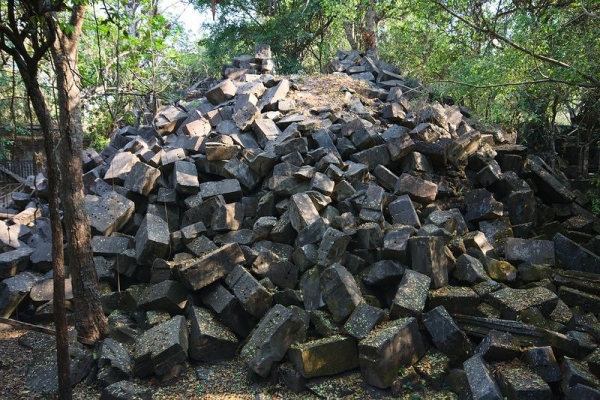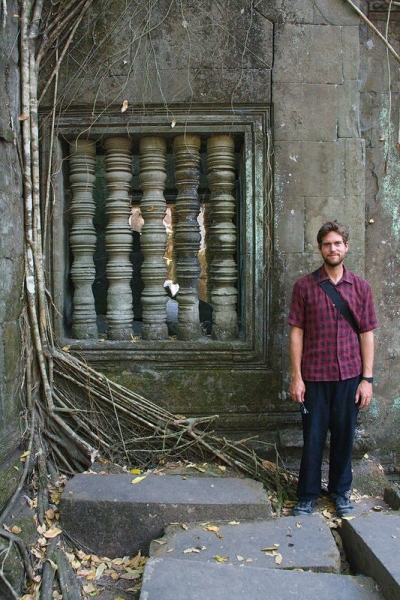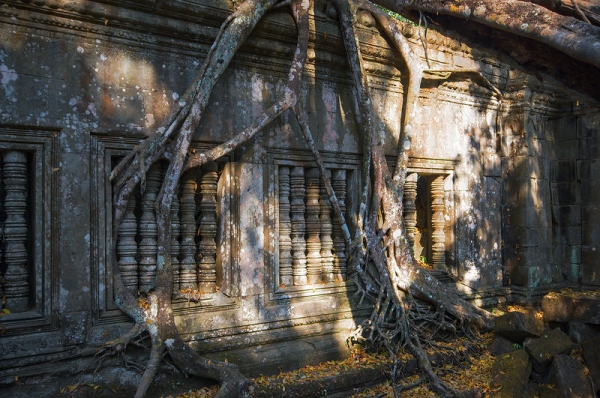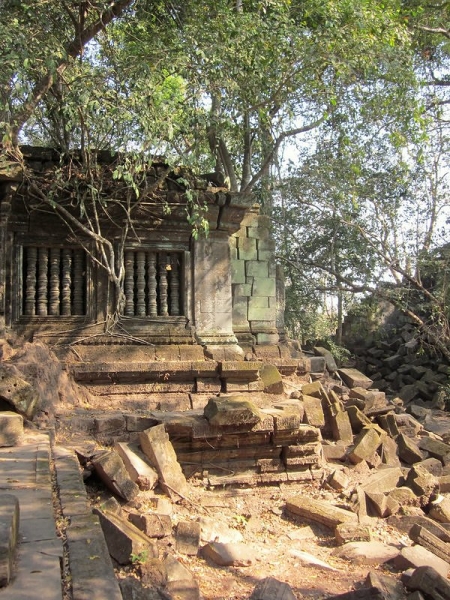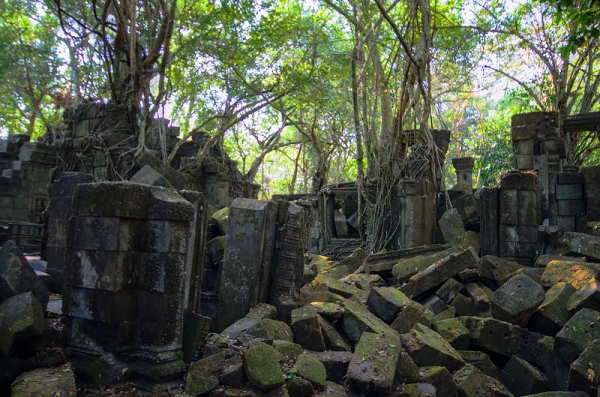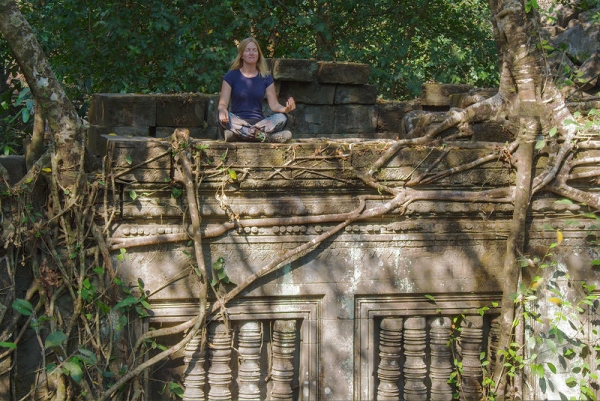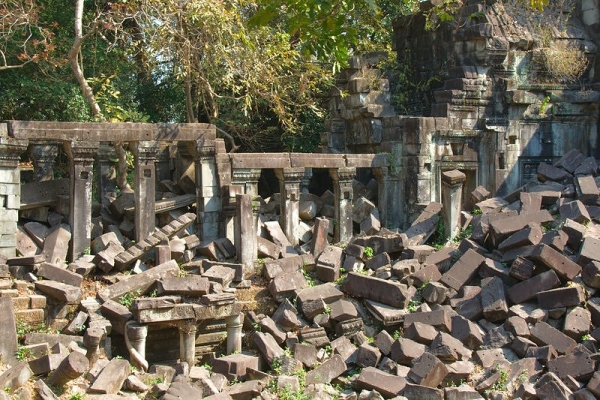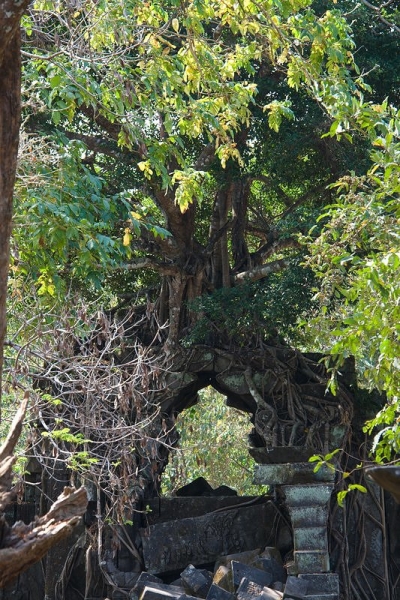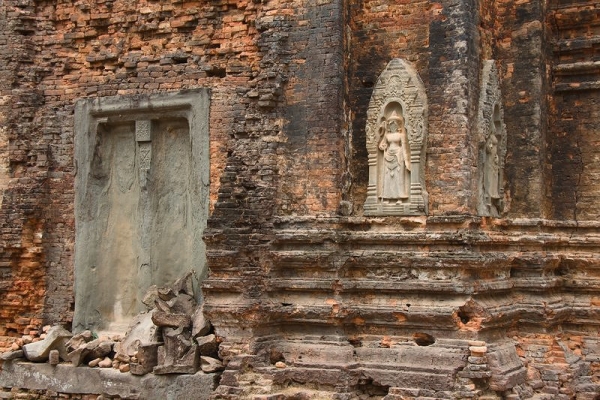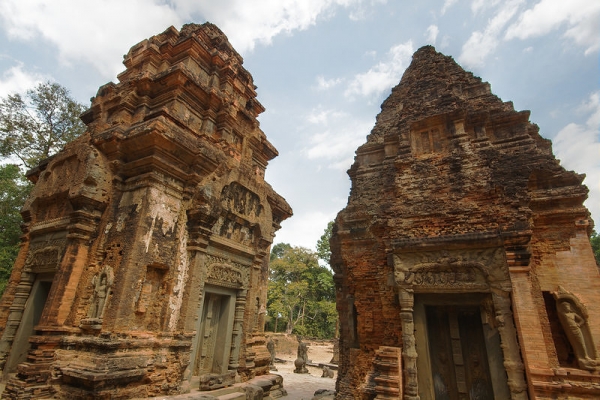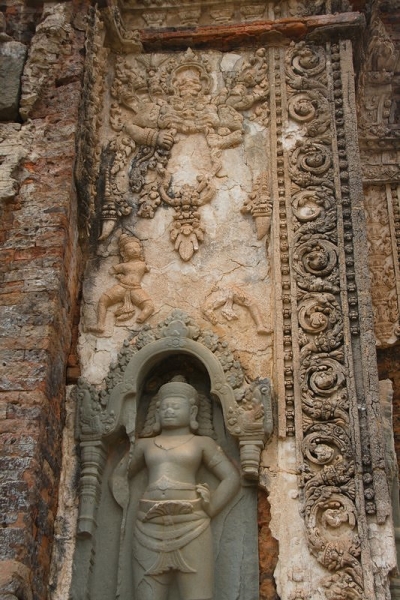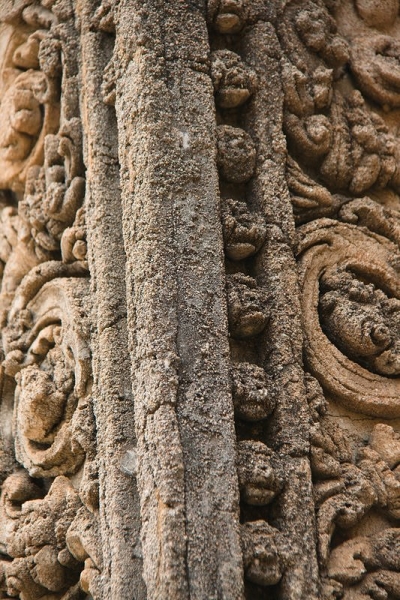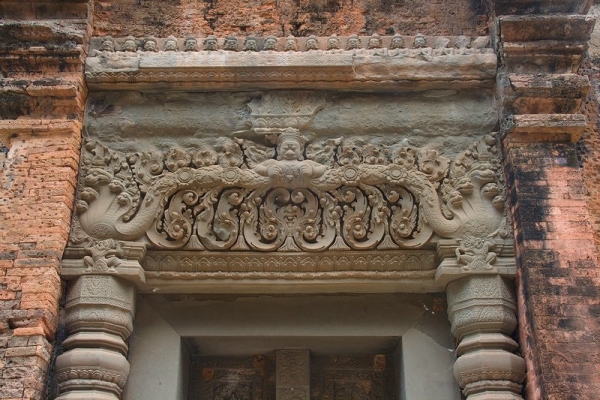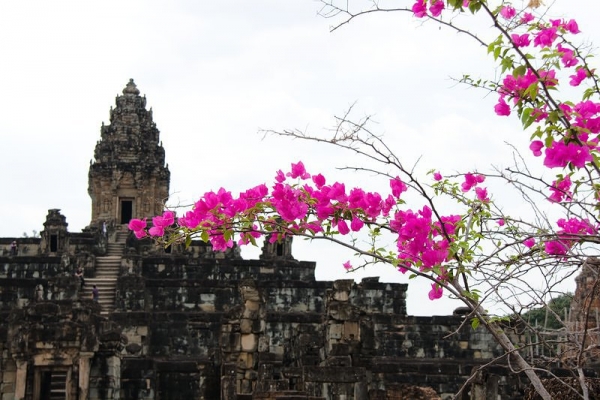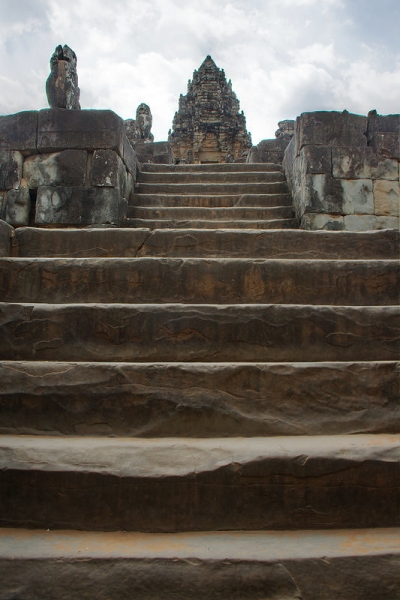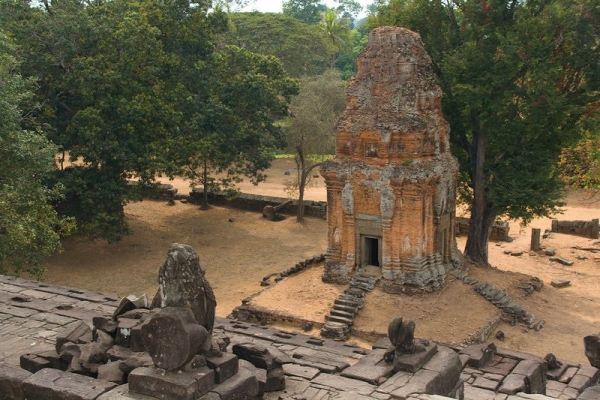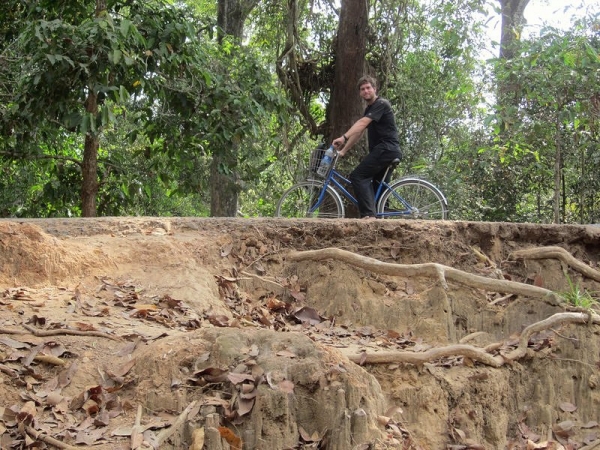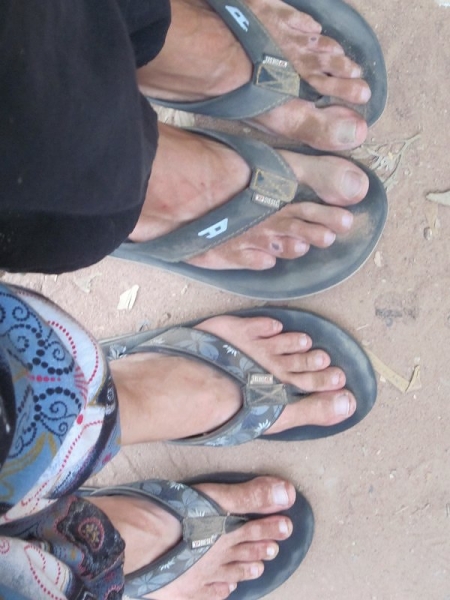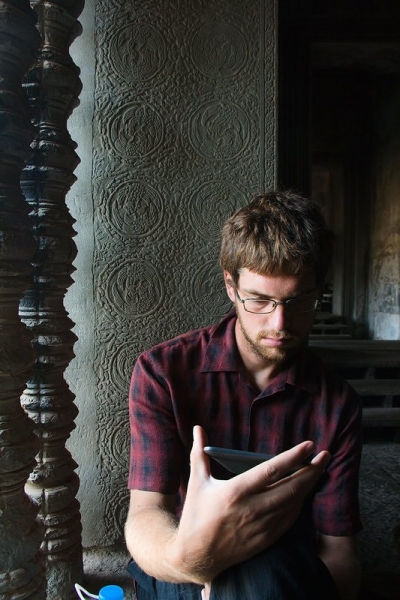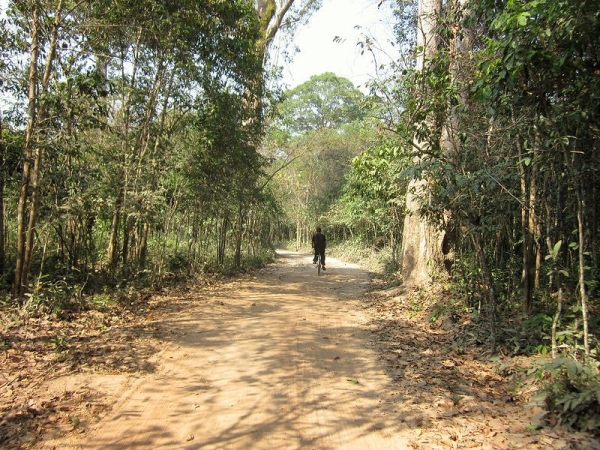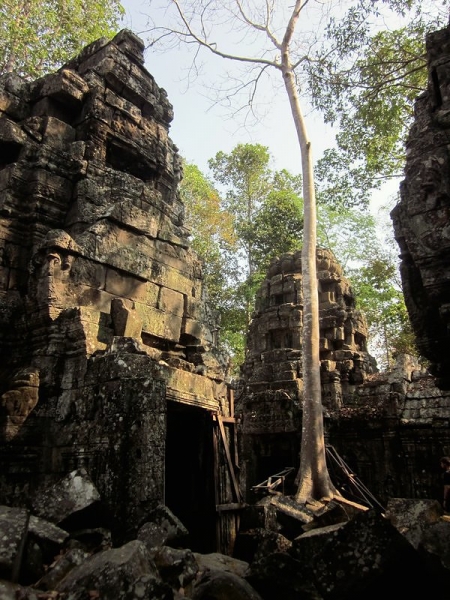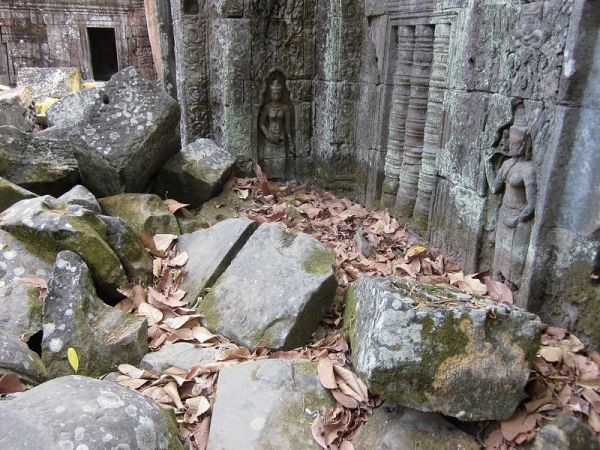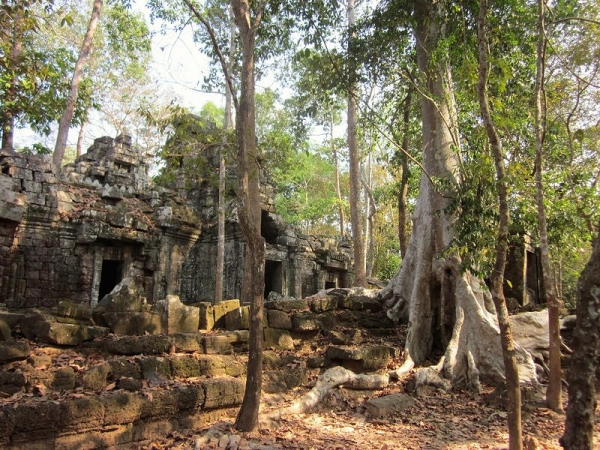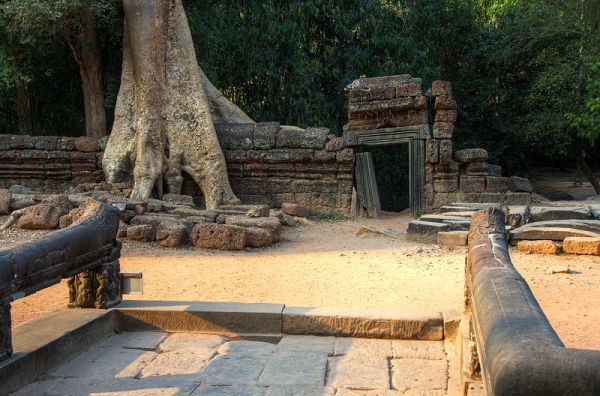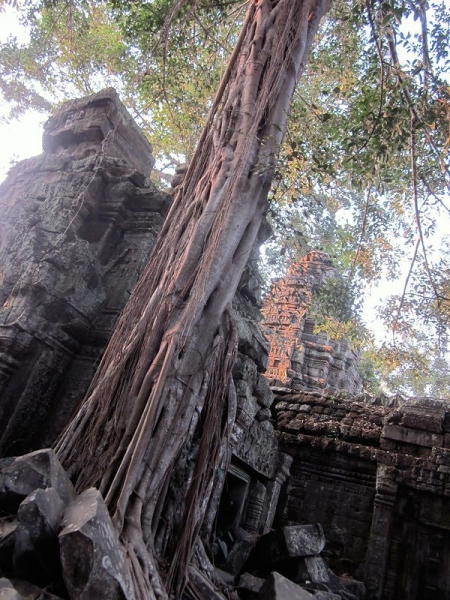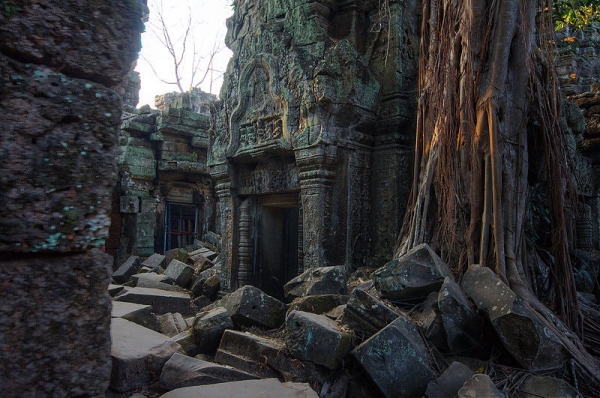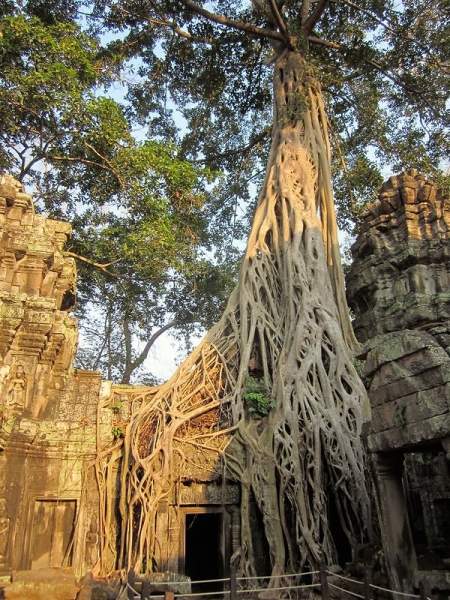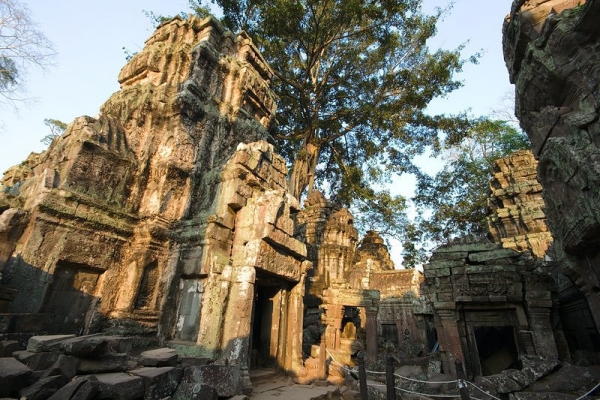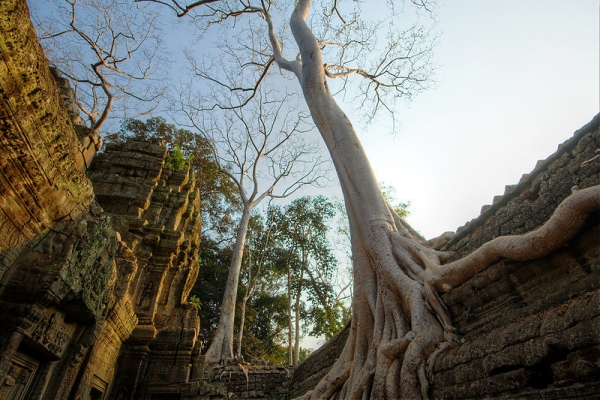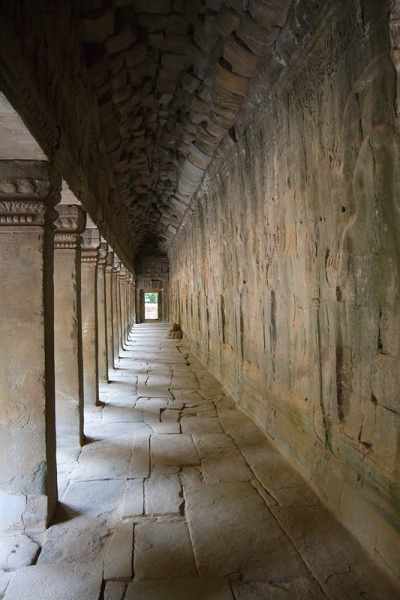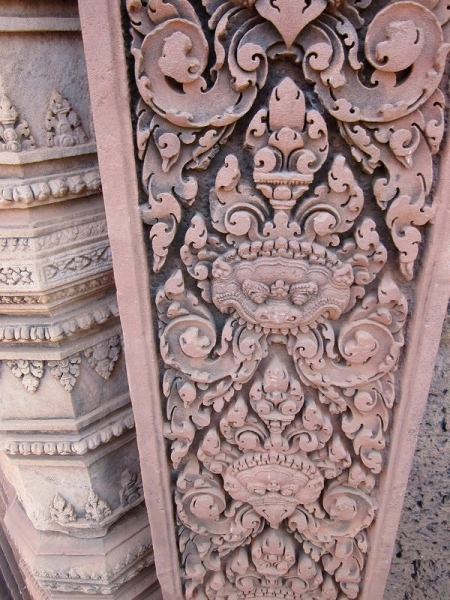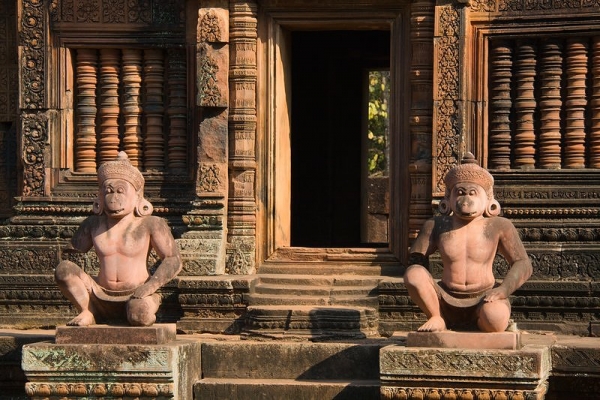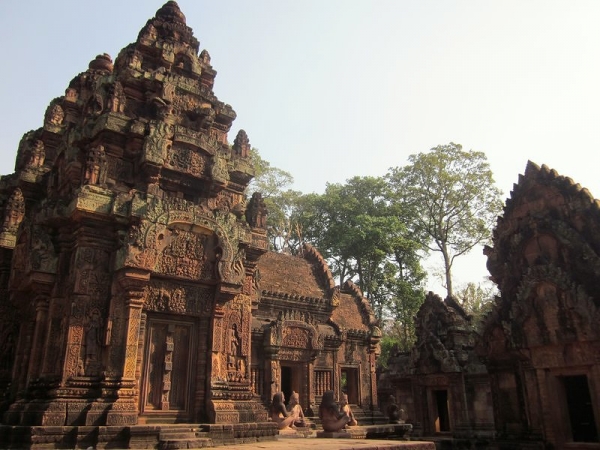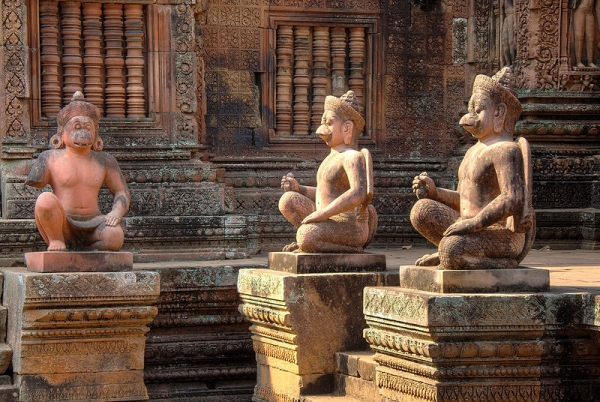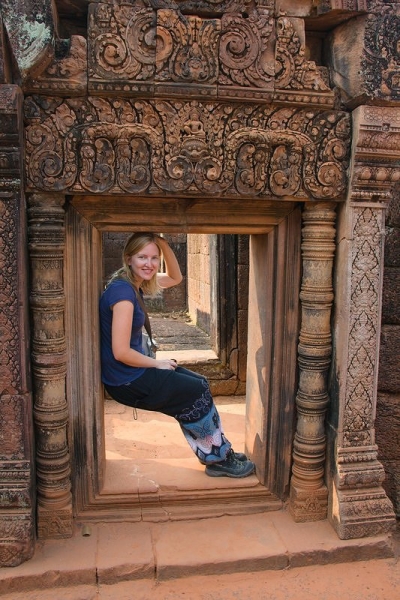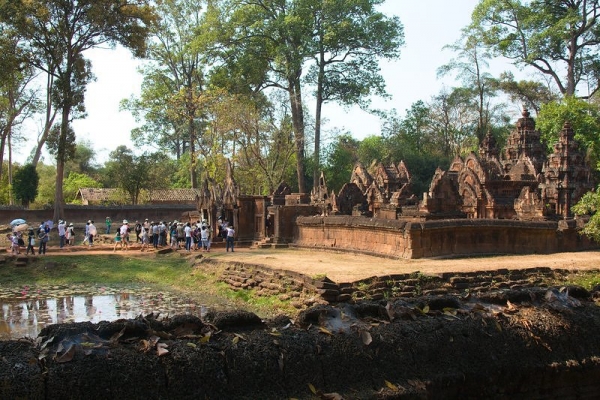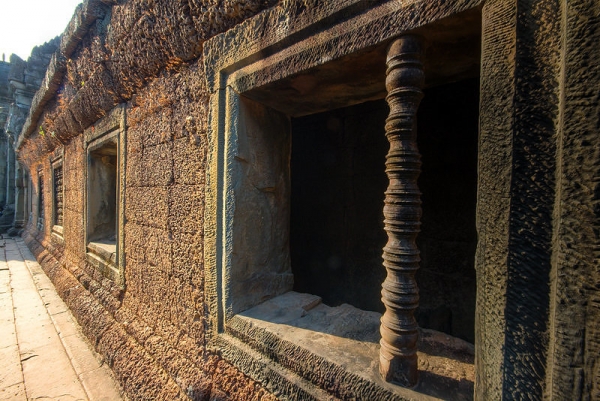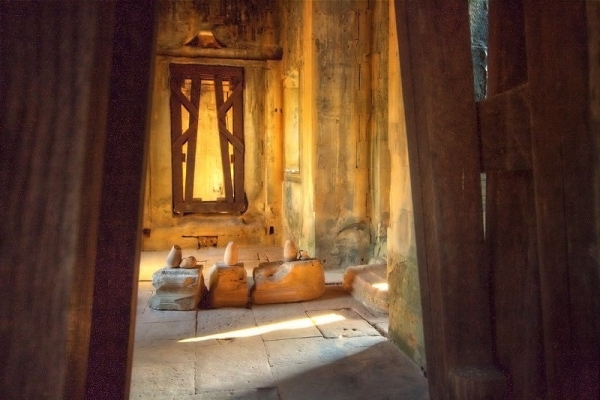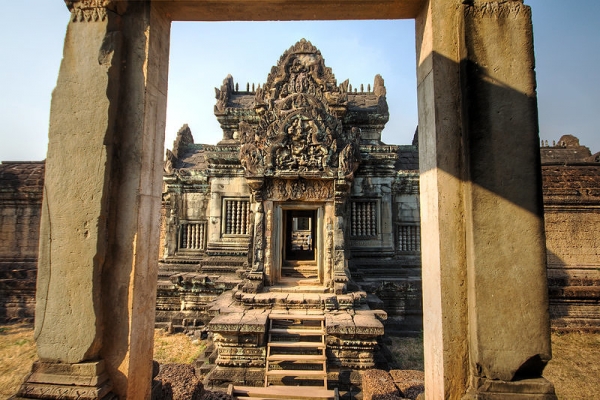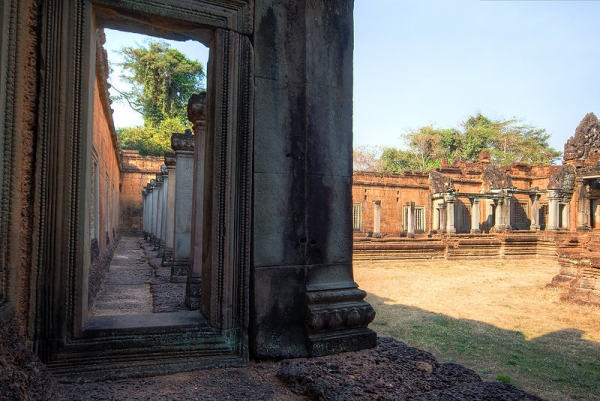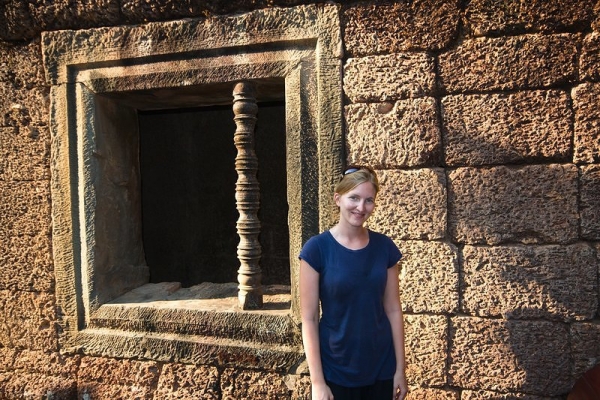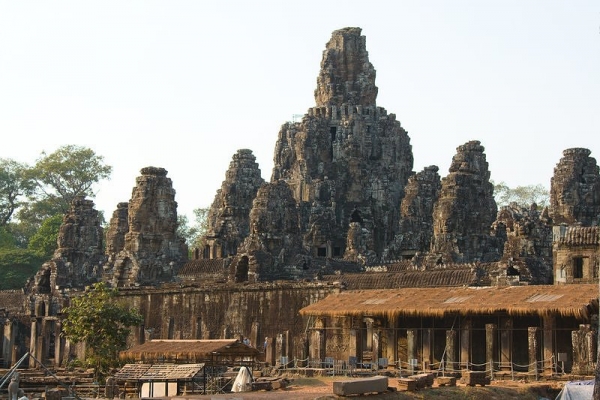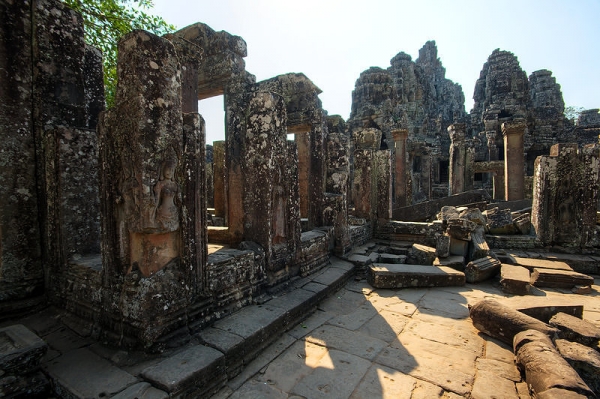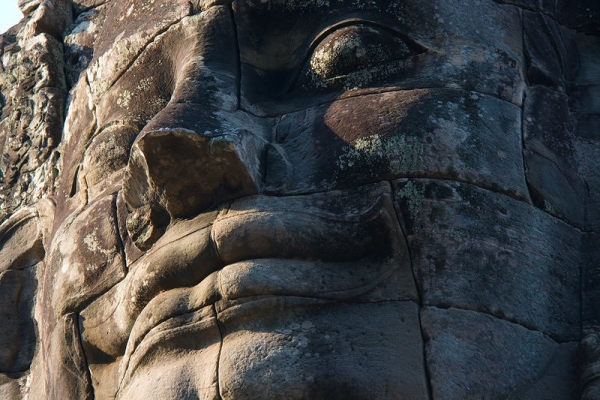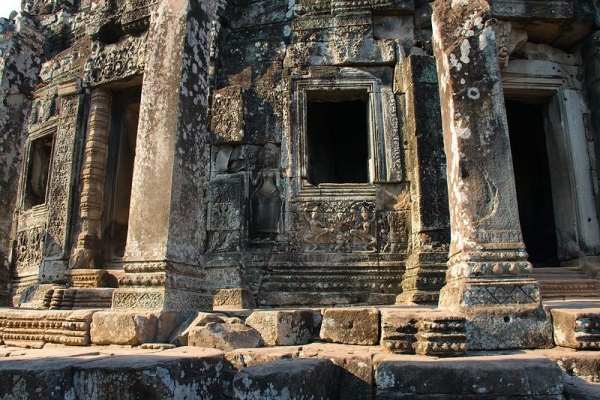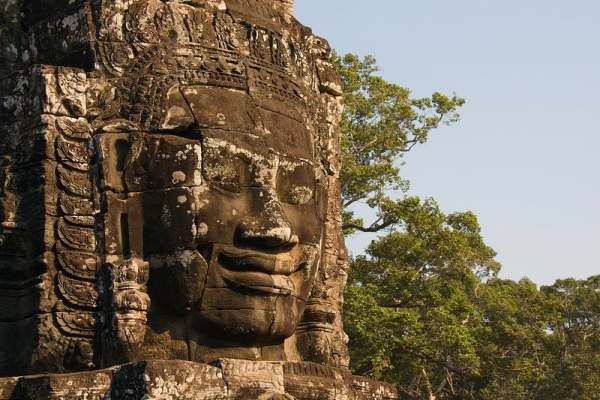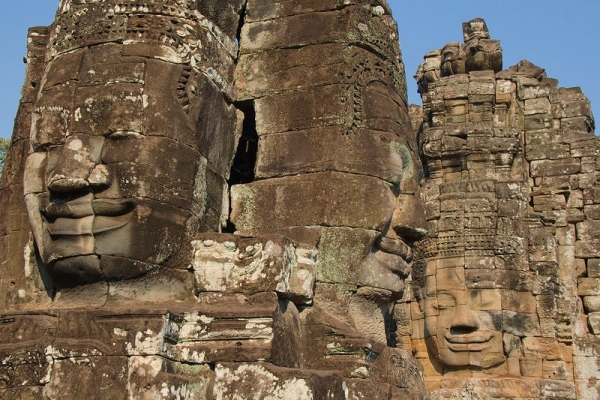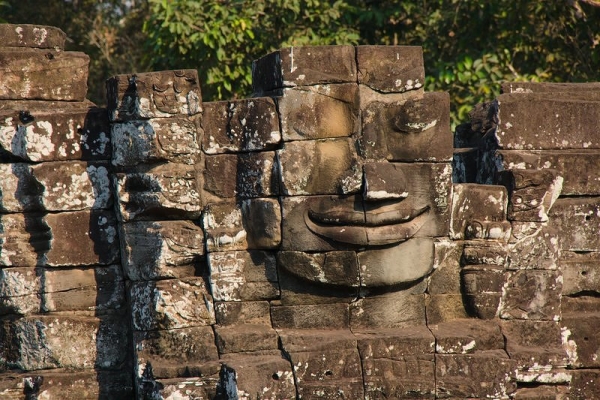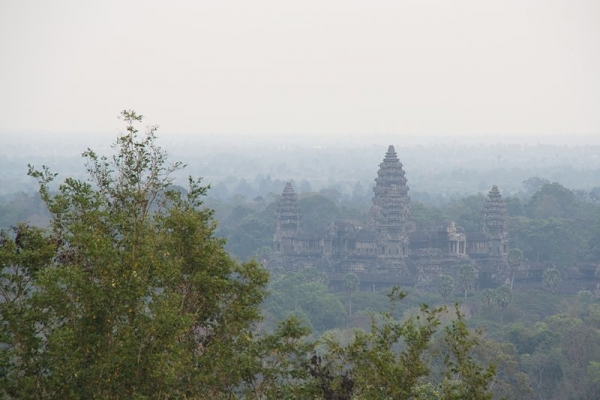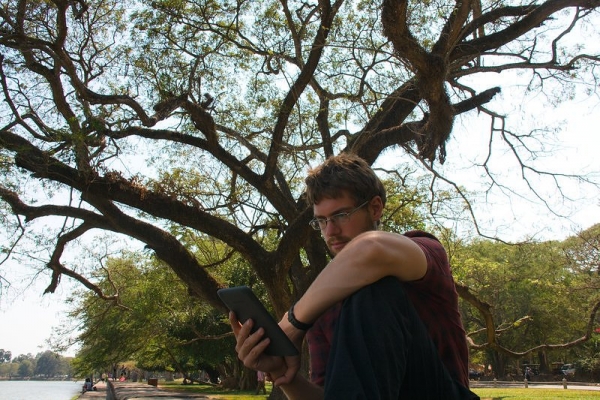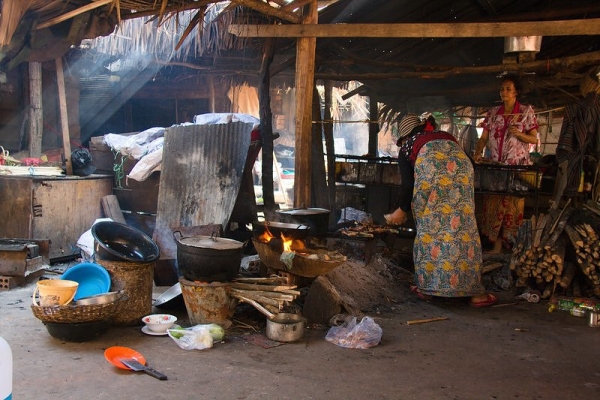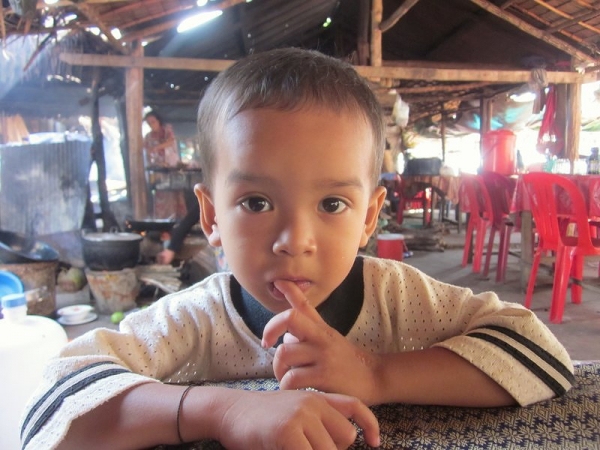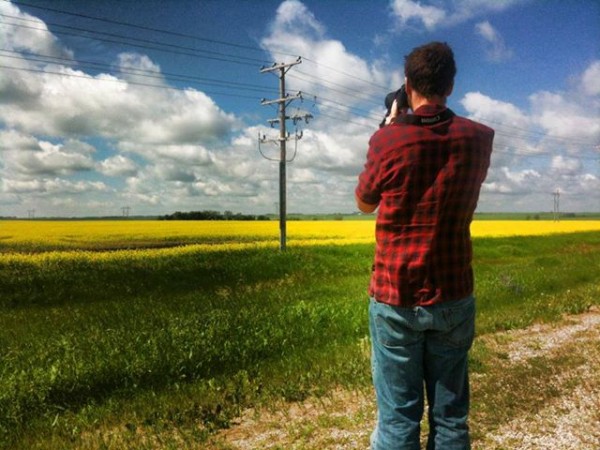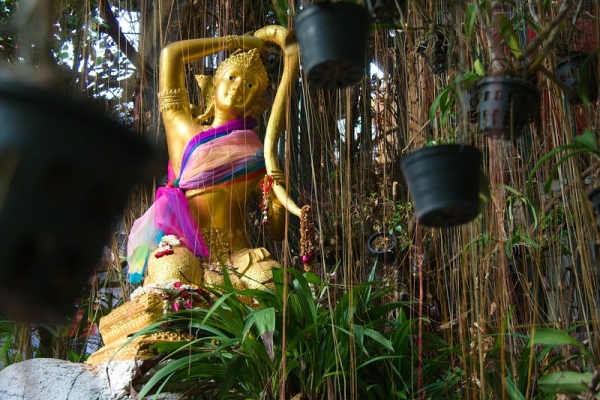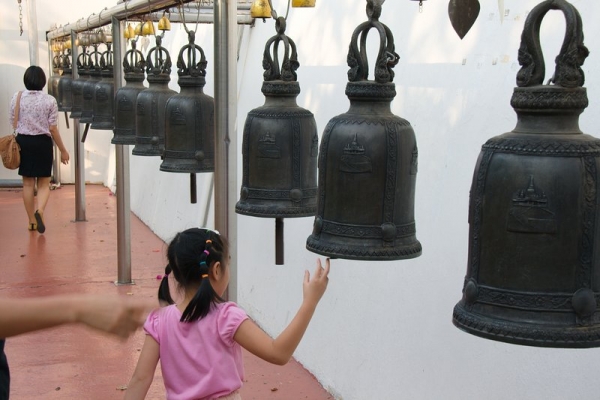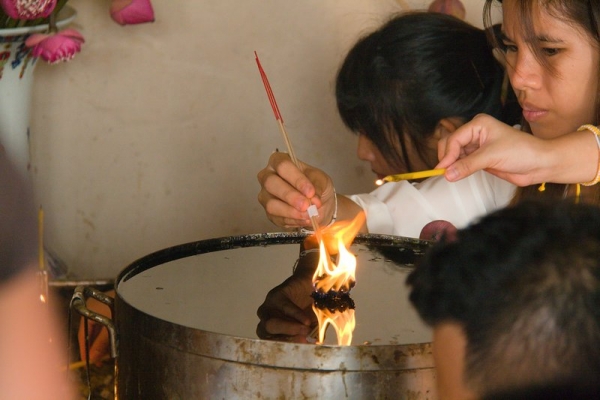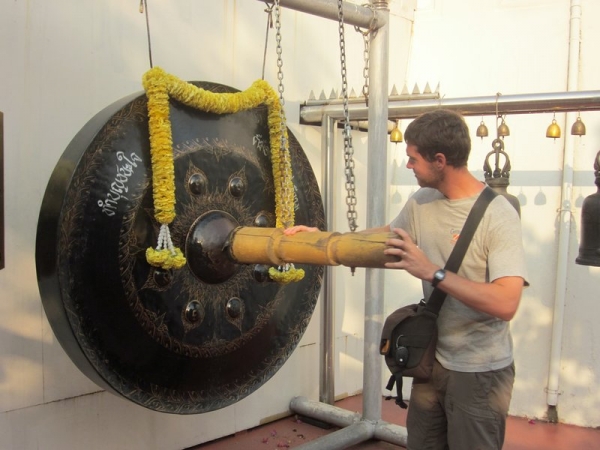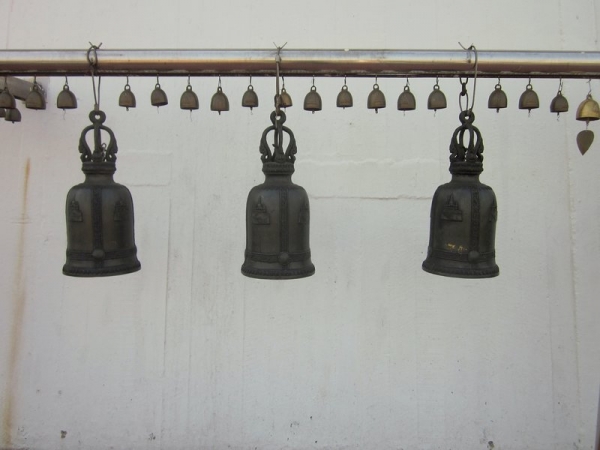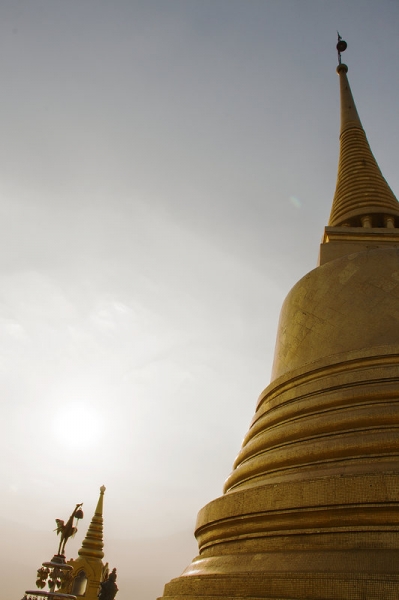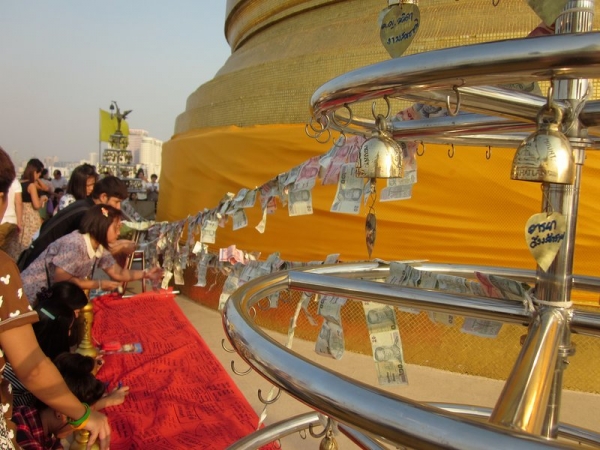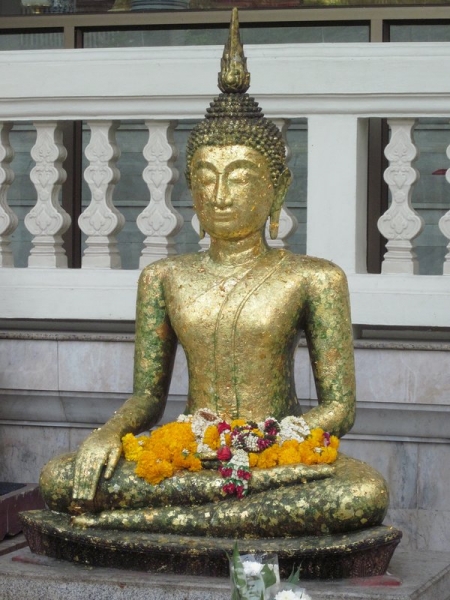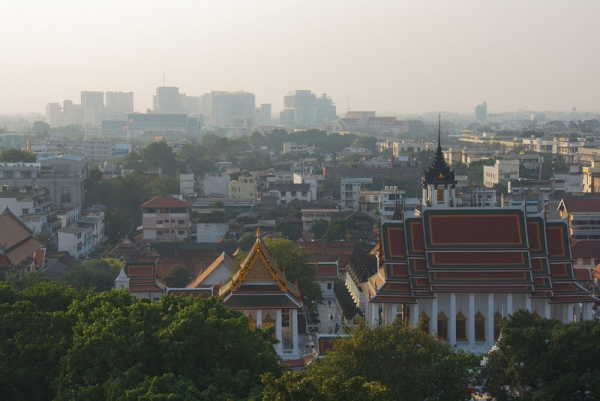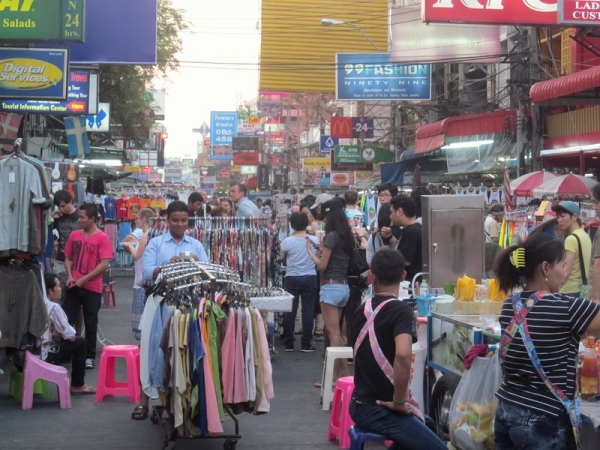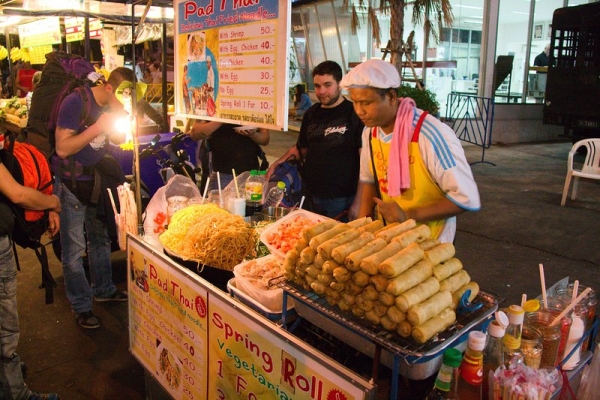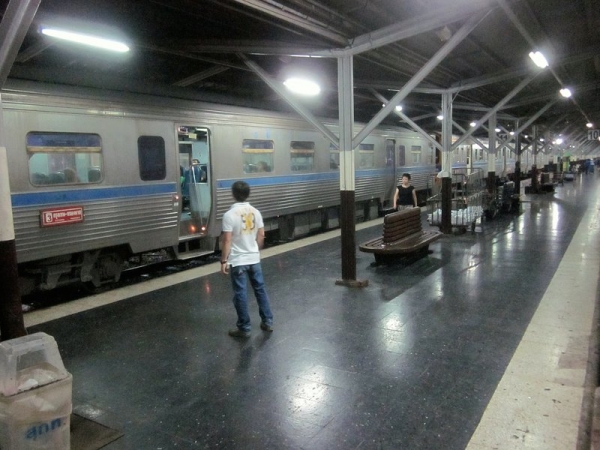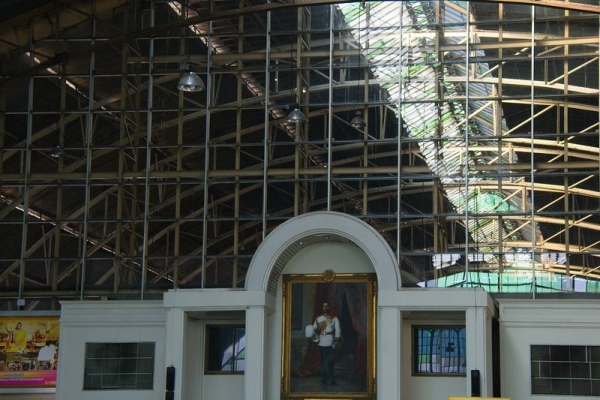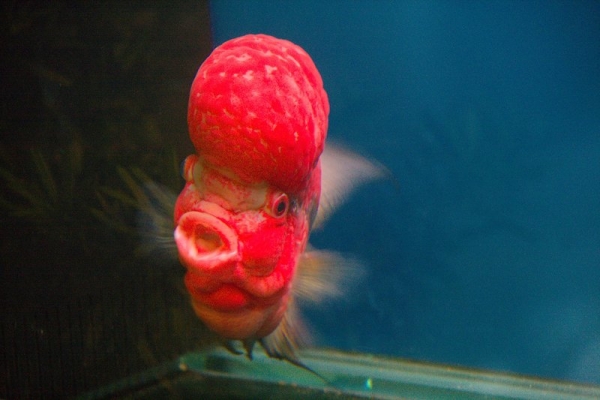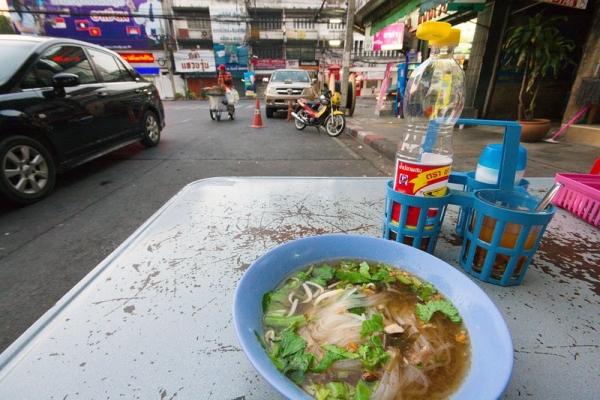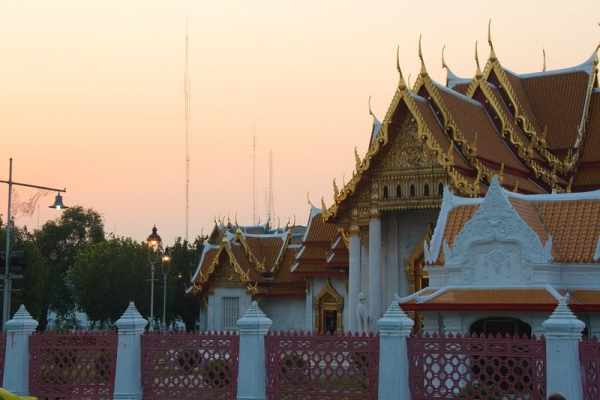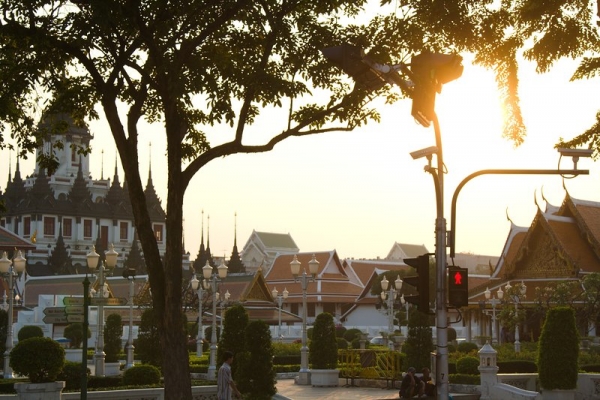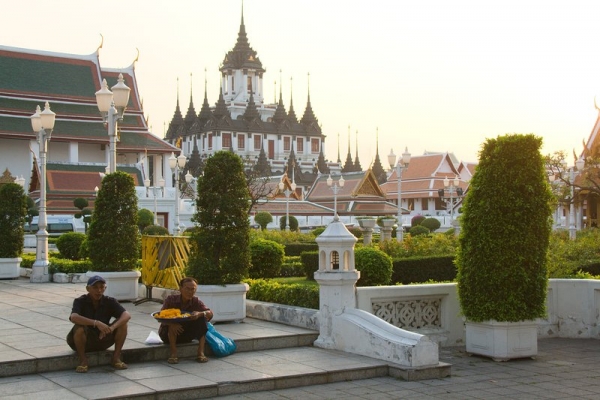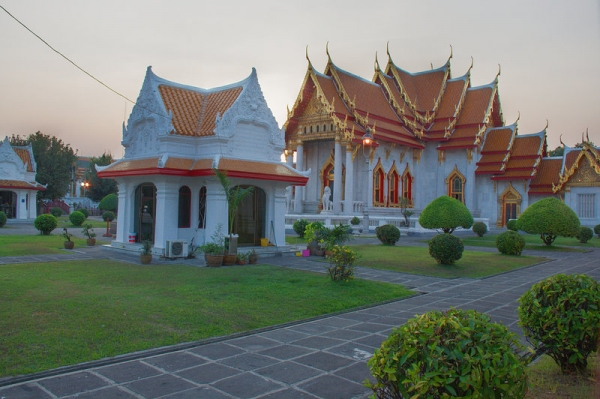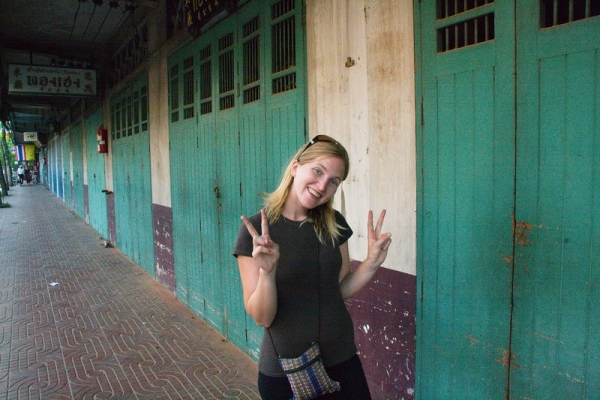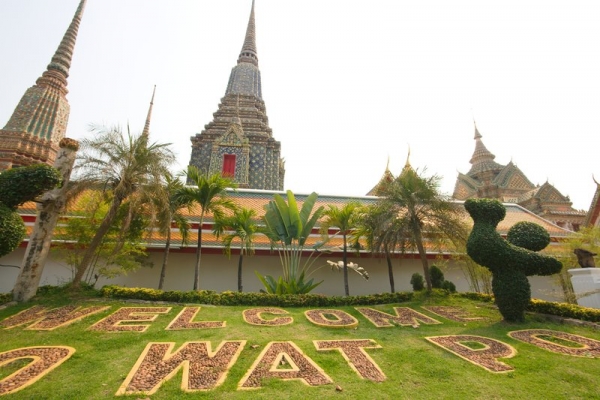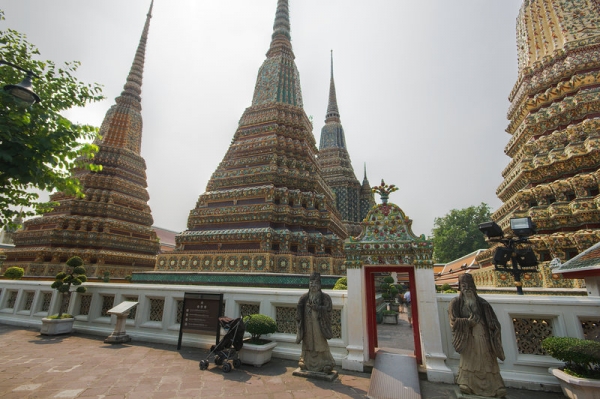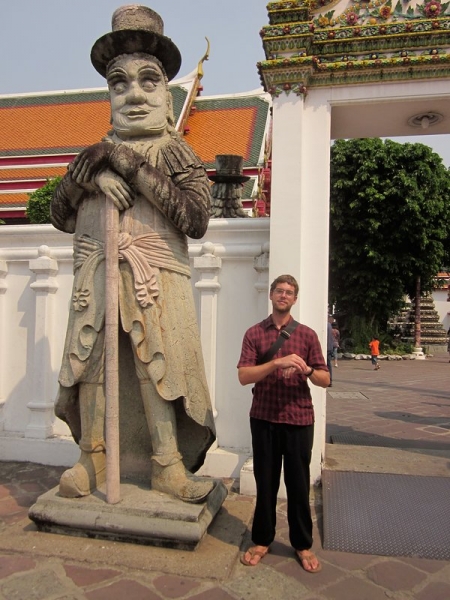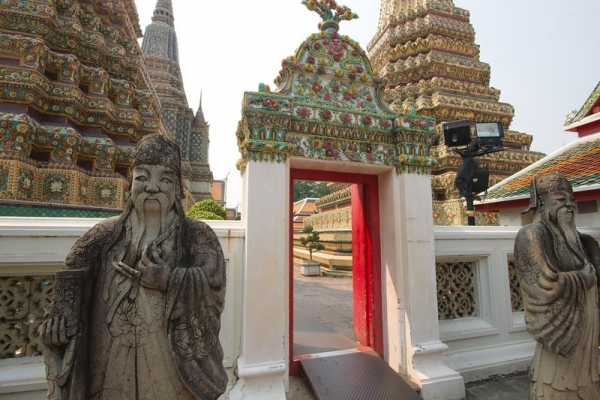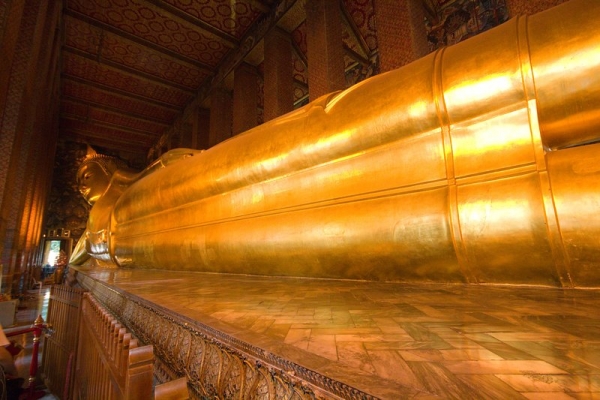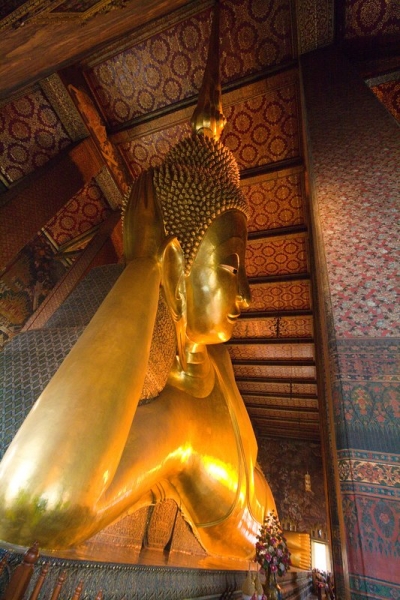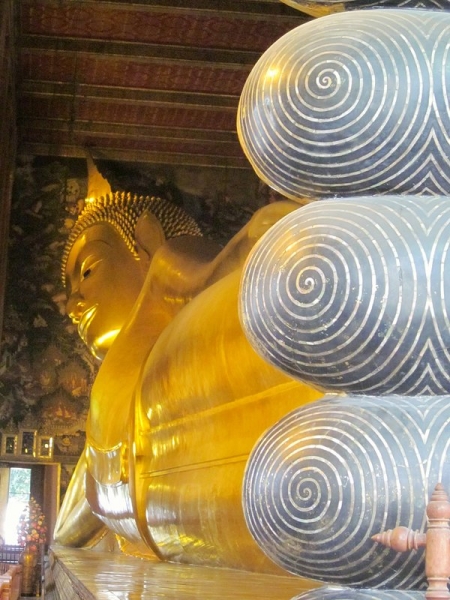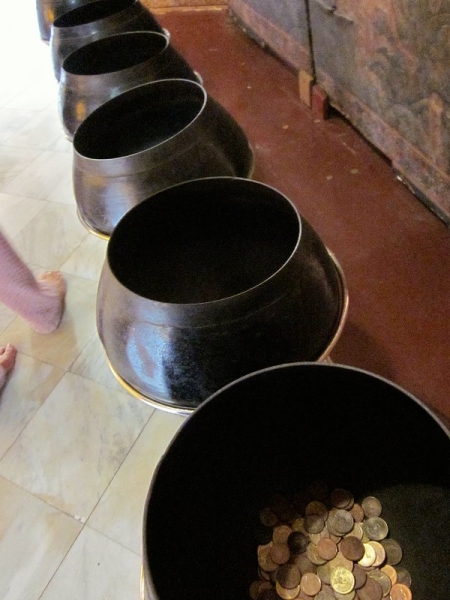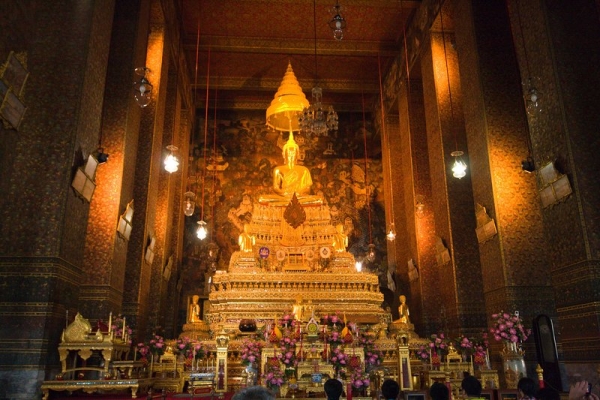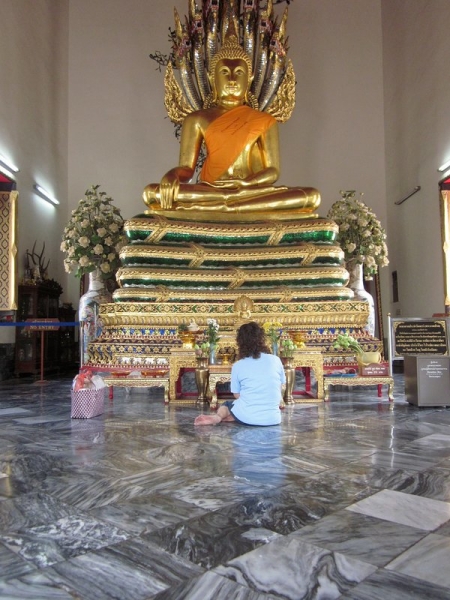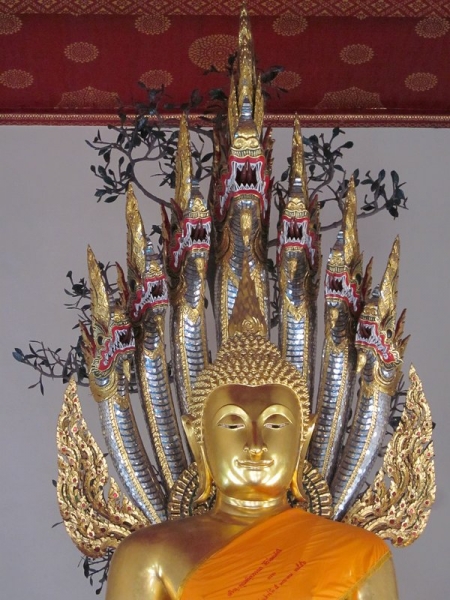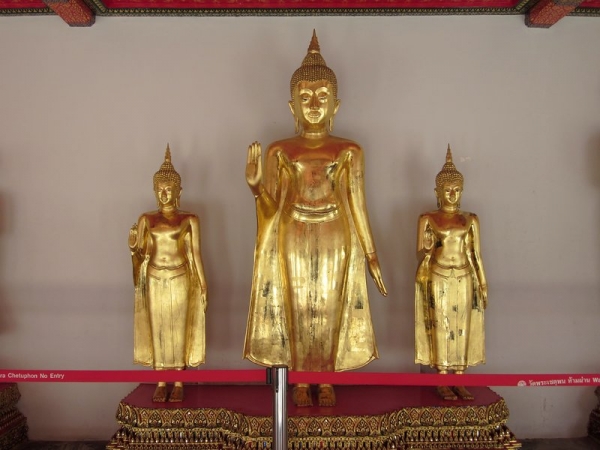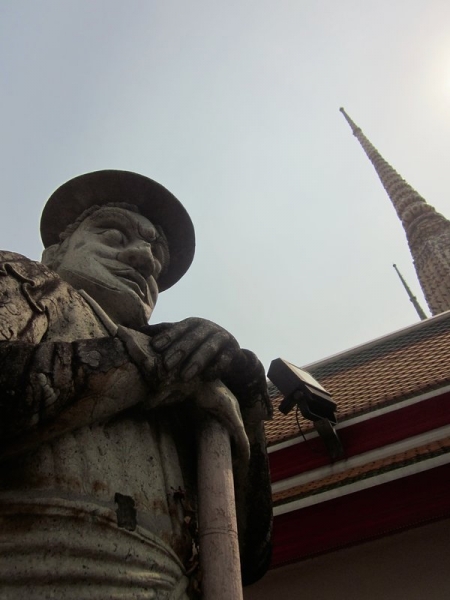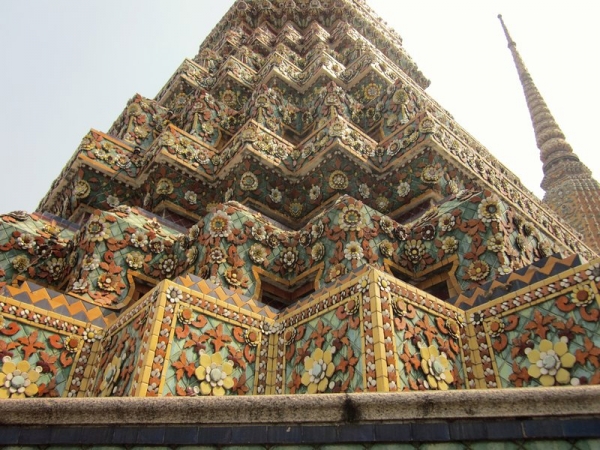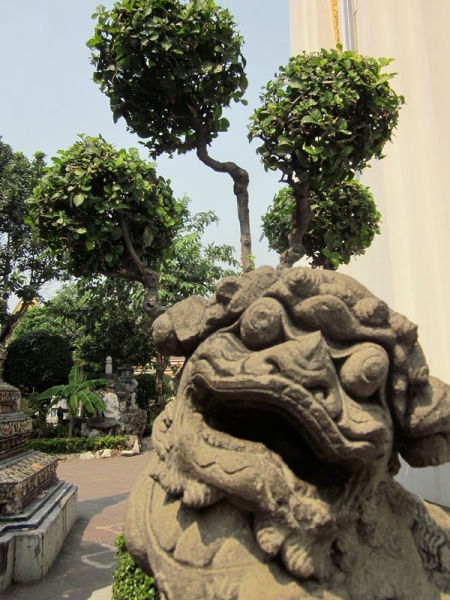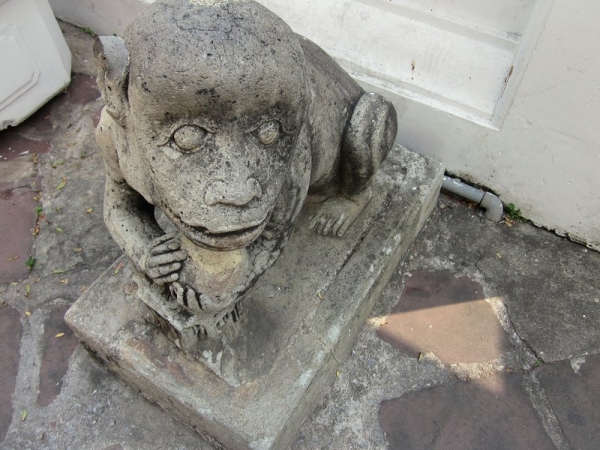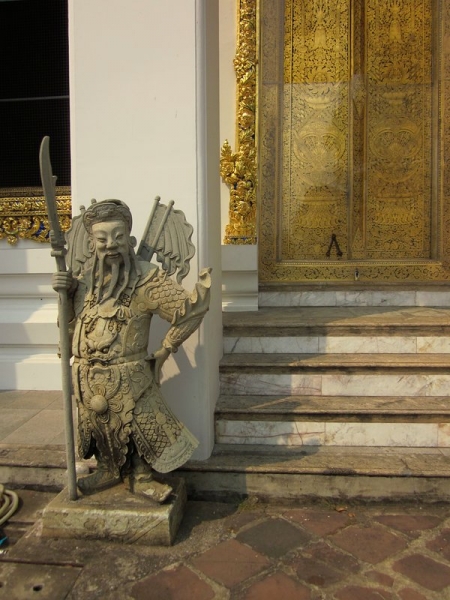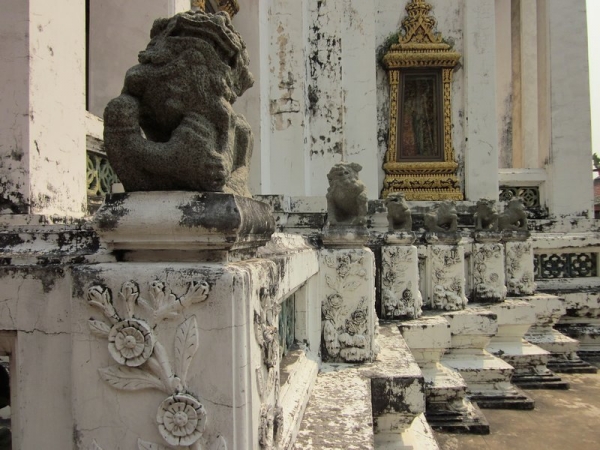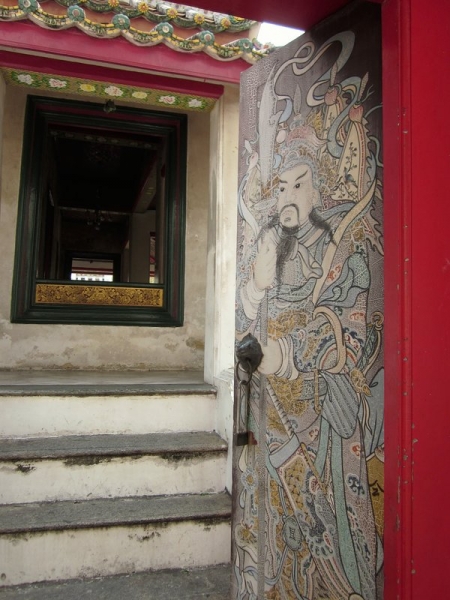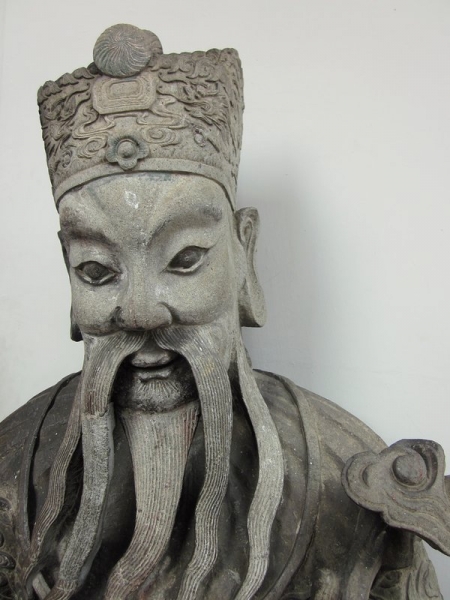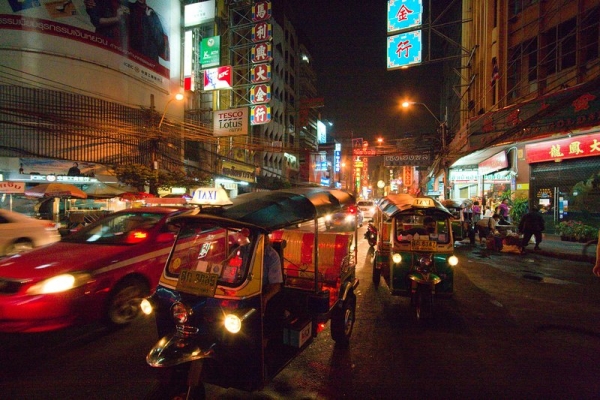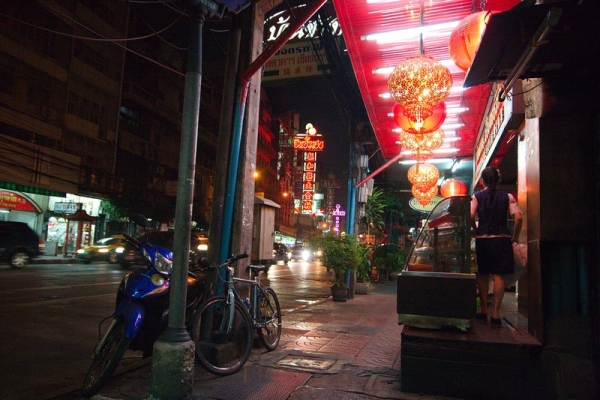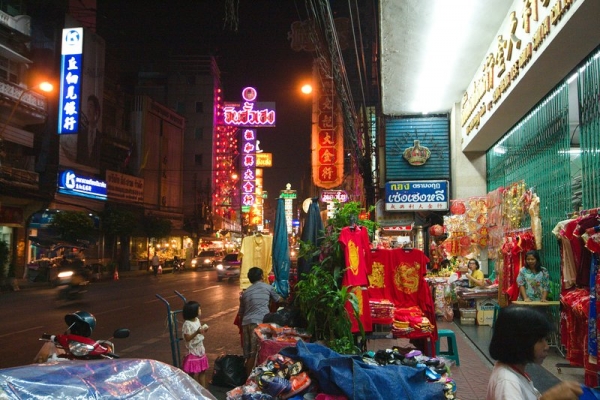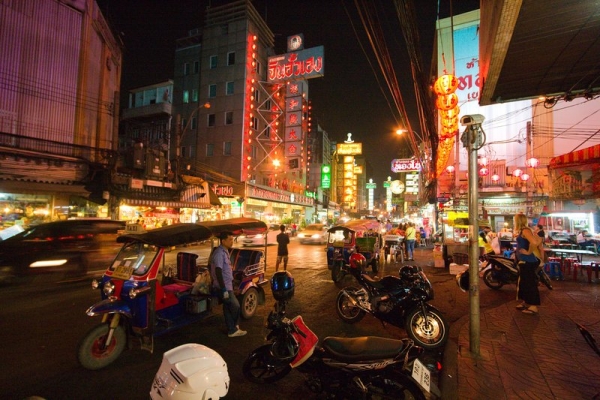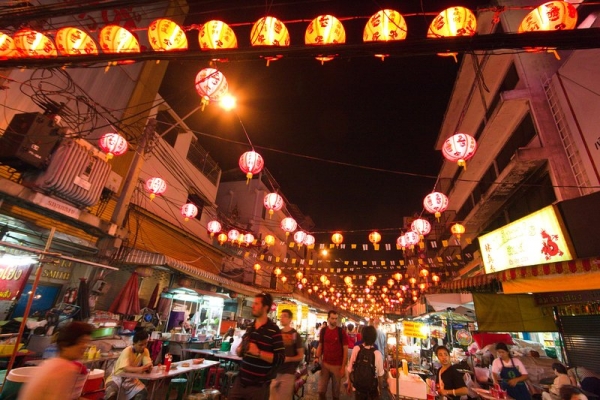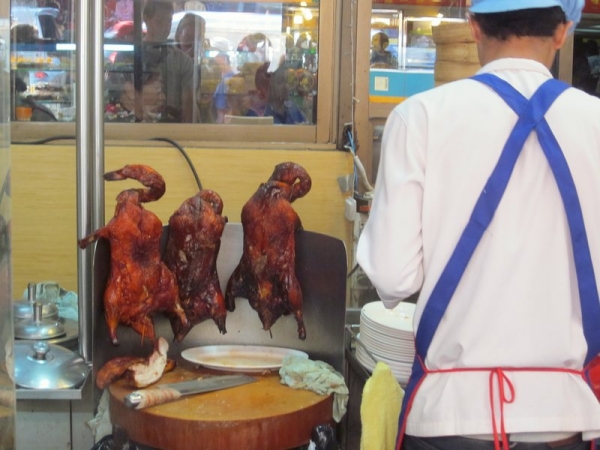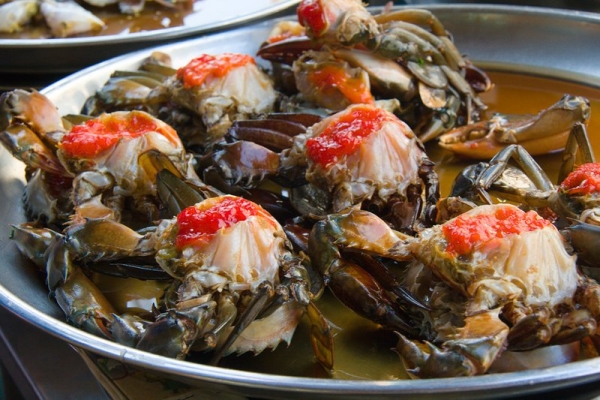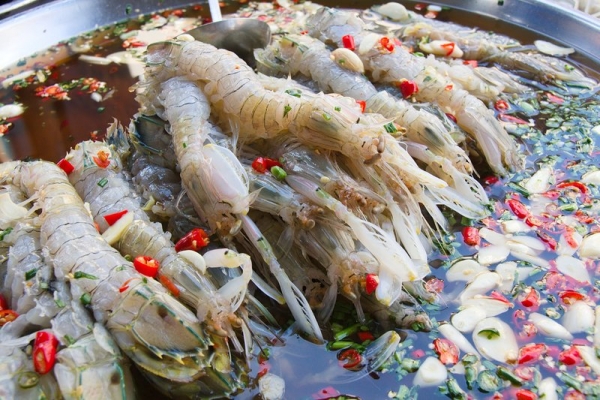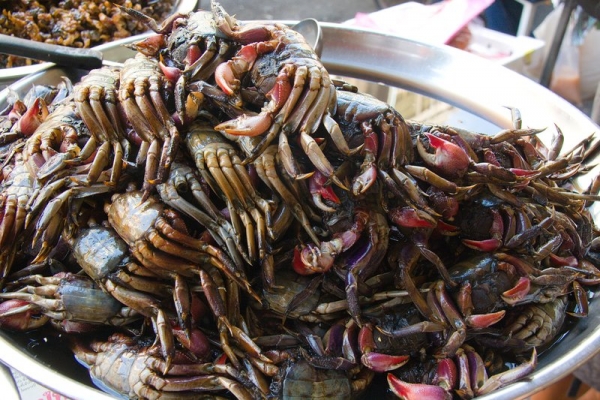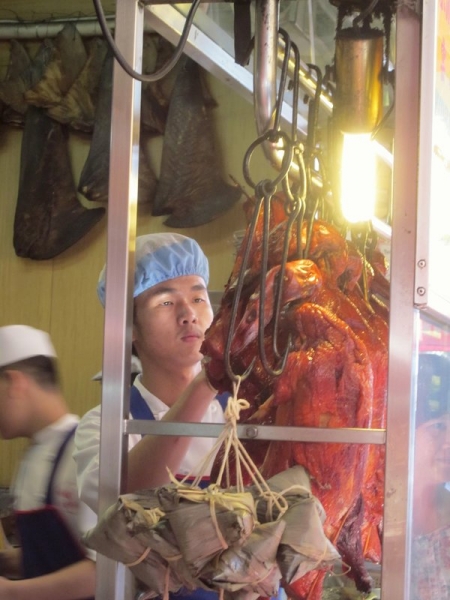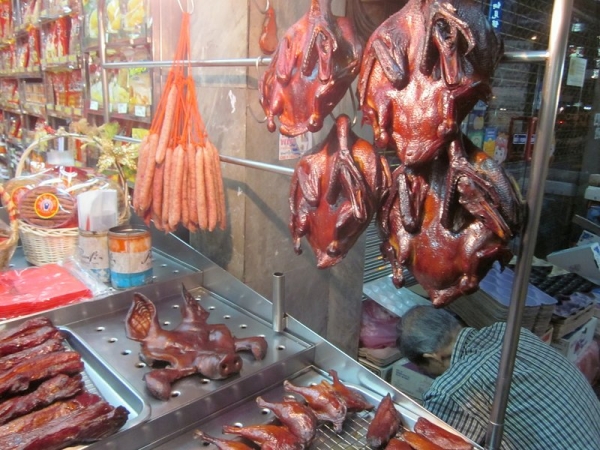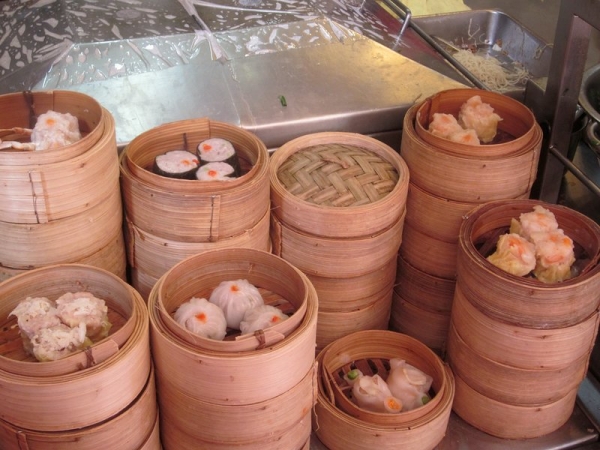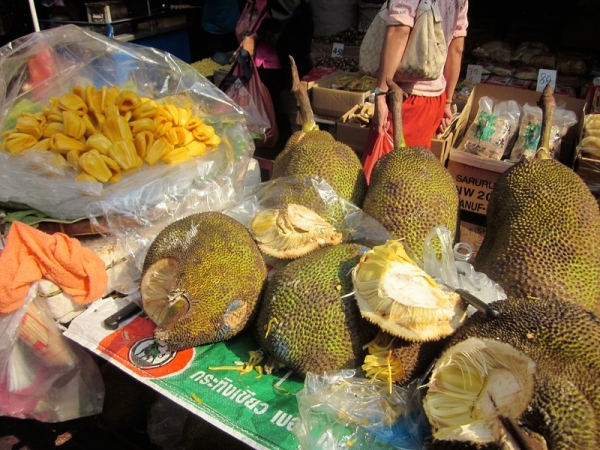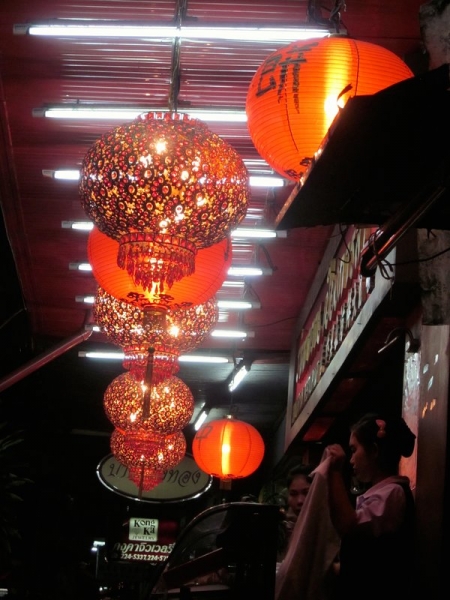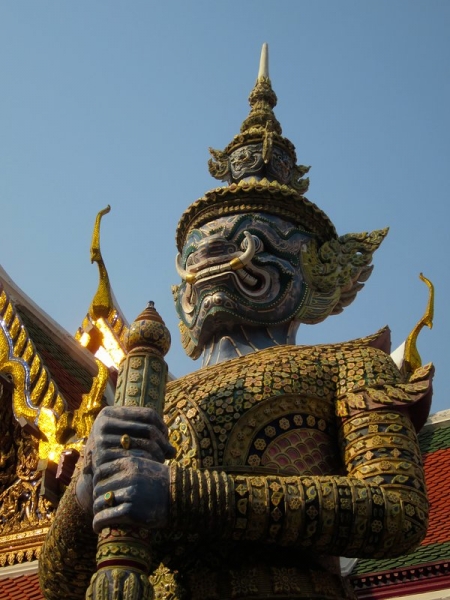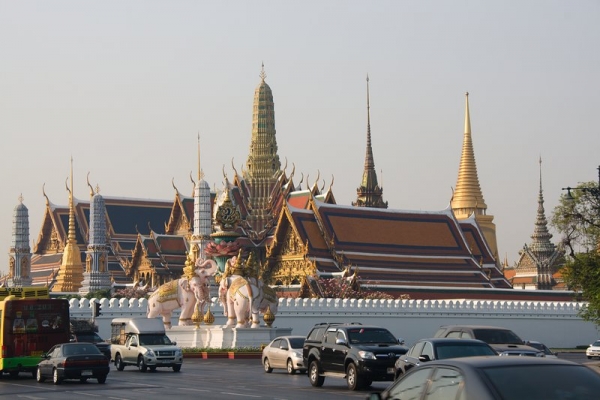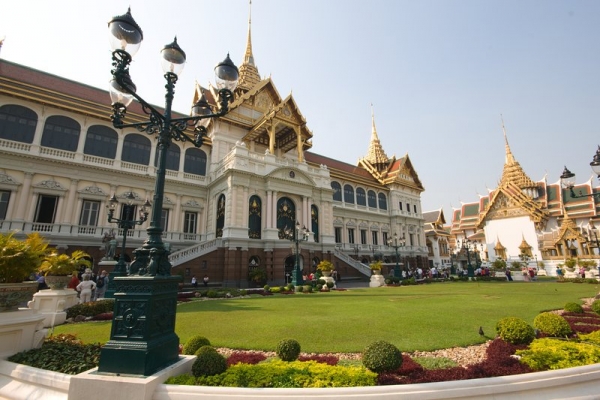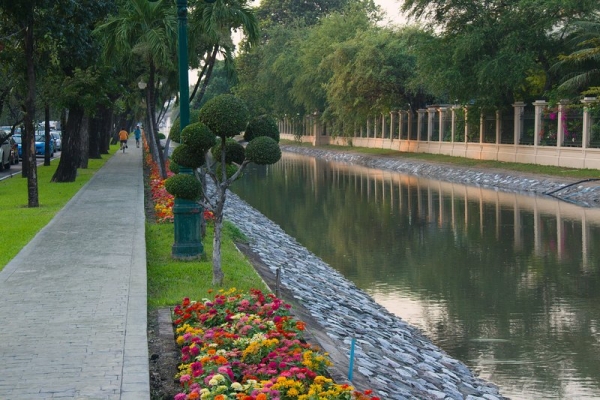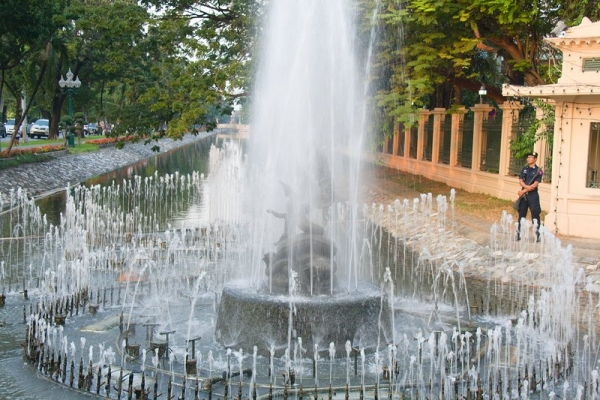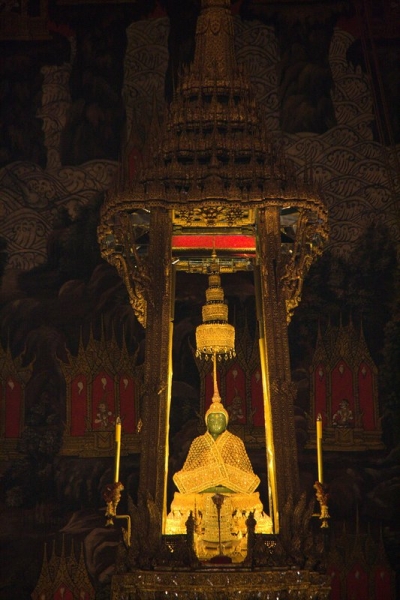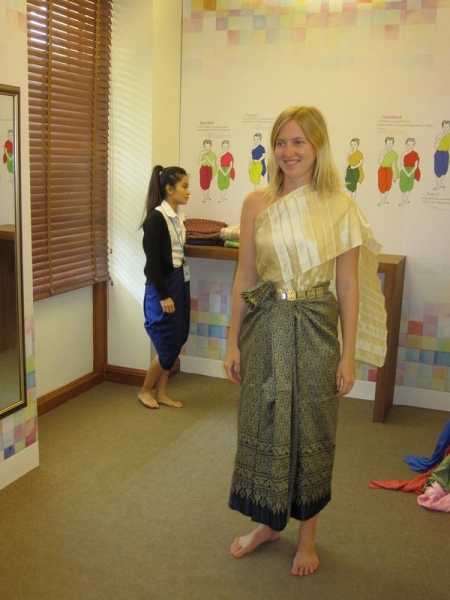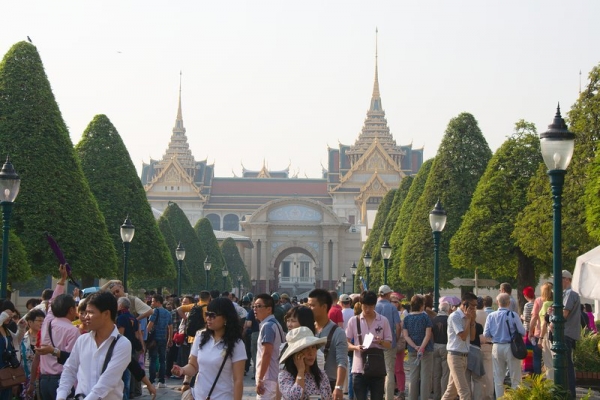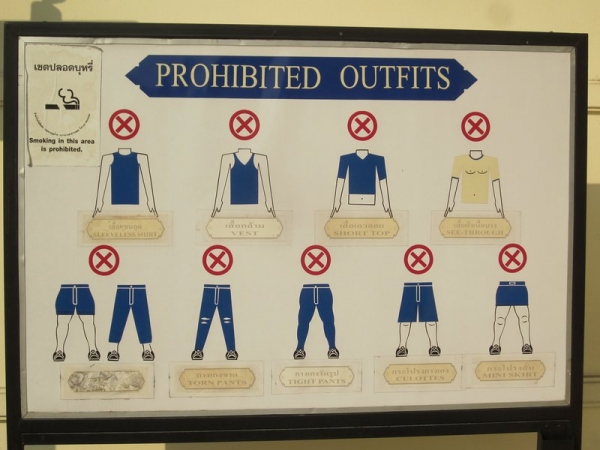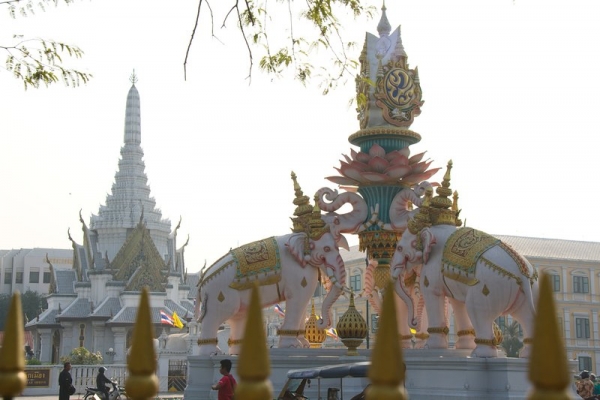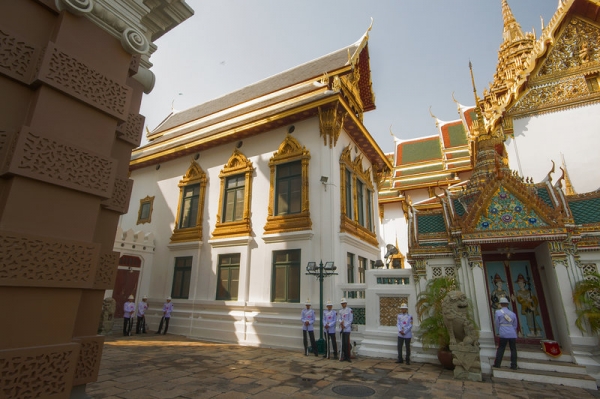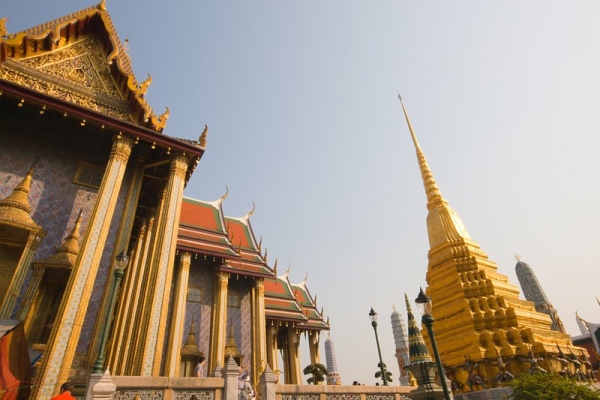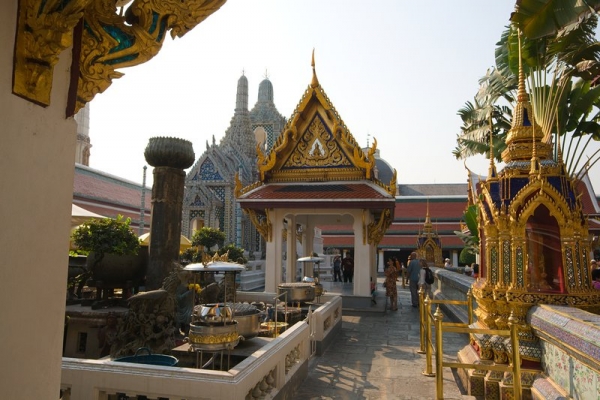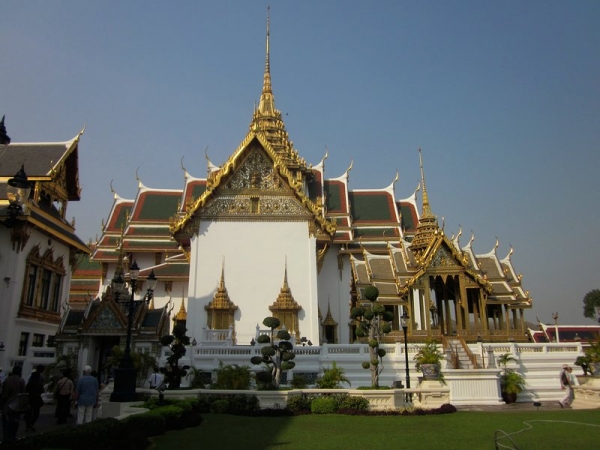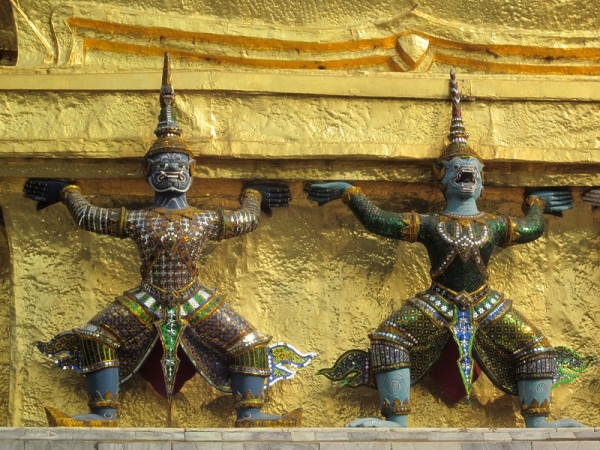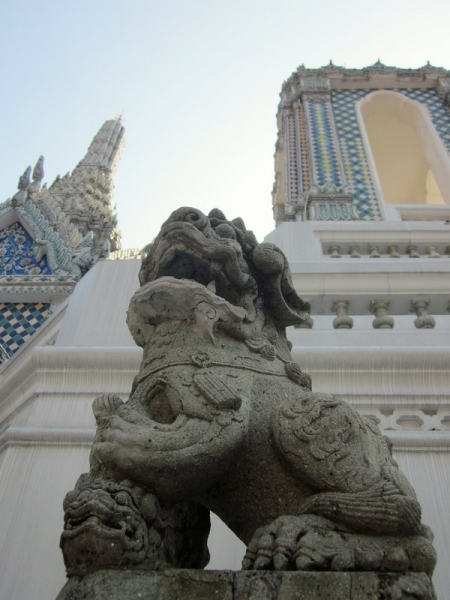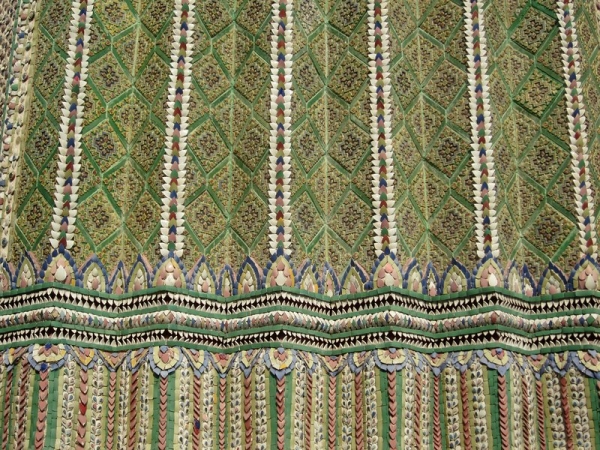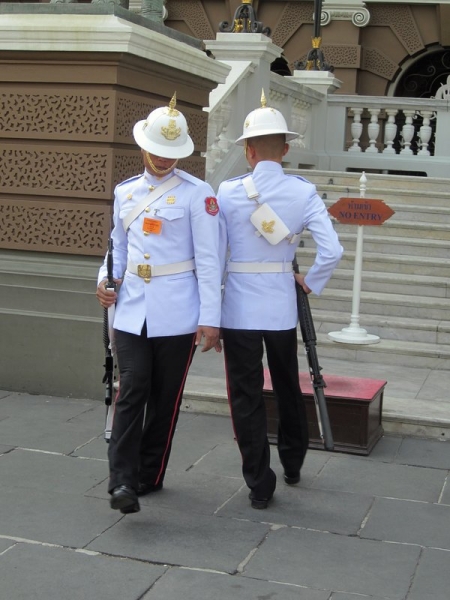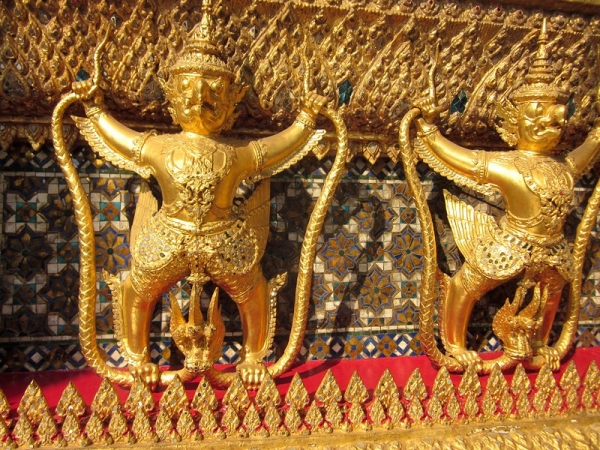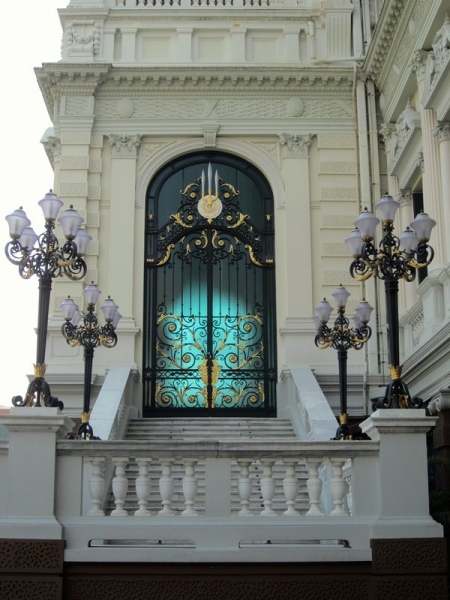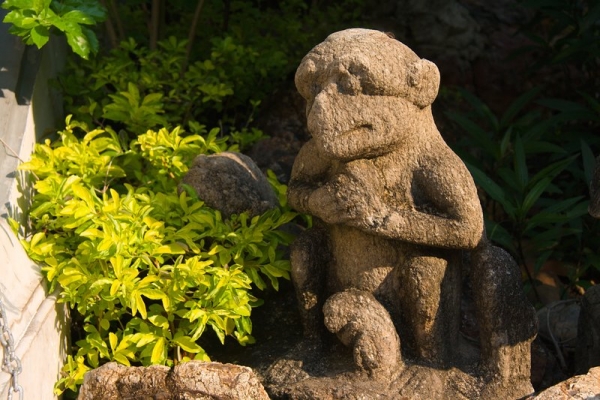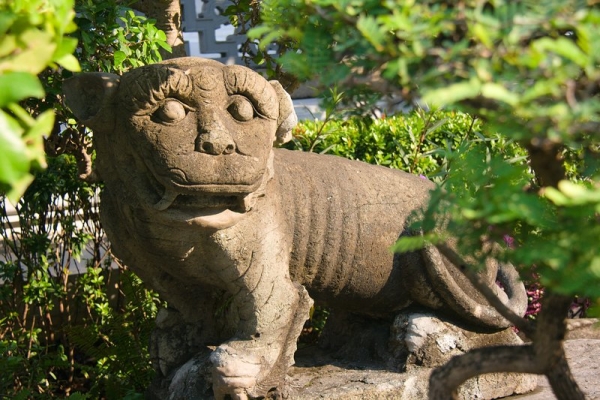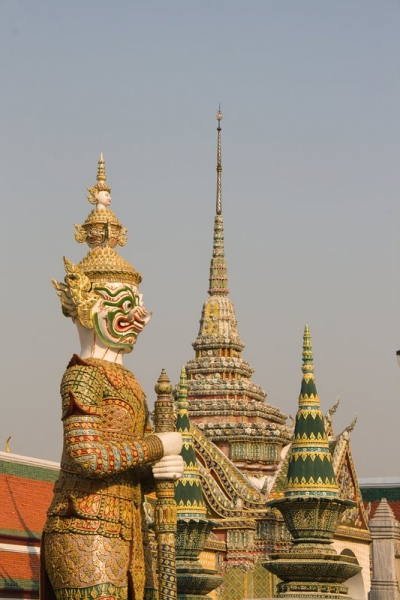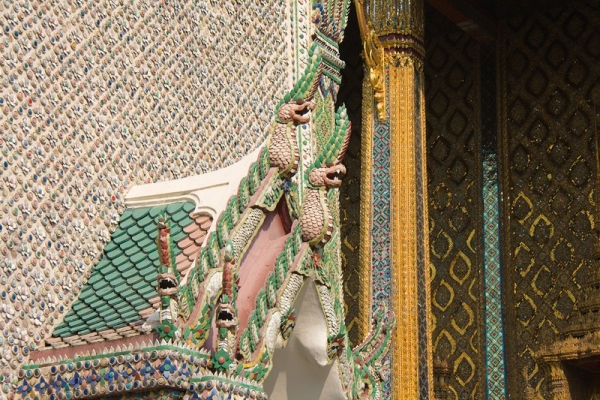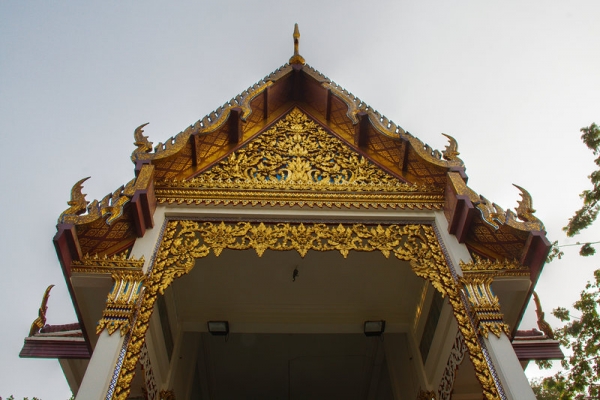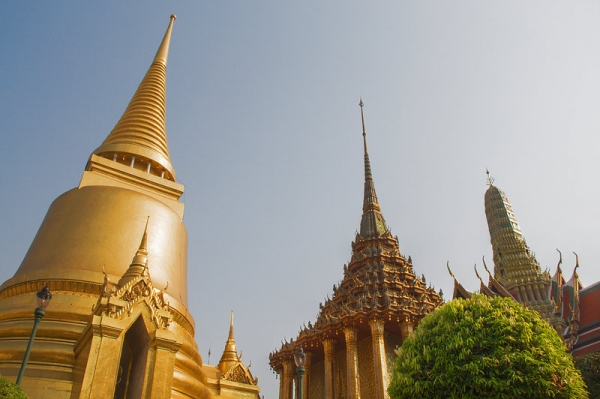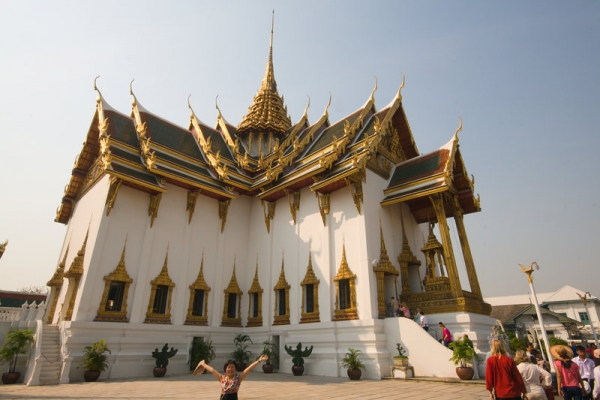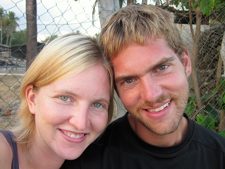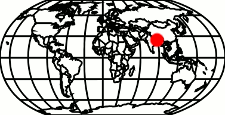Siem Reap was hot. It was something like 37°C outside every day. Not the hottest weather we’ve experienced, but combined with the crippling near 100% humidity, it sure felt like the hottest. After a few days of bicycling between temples in that heat, combined with the mandatory daily drinking of 8 litres of water, my skin became waterlogged. All my pores were swollen, red, and itchy. I had sweat too much.
The prickly dots of heat rash.
A quick Google search informed me that I had contracted what’s known as a heat rash. The good news was that it’s fairly common, and there’s no need to see a doctor. The cure: Keep cool, stay in the shade, and try not to sweat.
It sounds simple, but our main mode of transportation was a bicycle. Our guest room not only didn’t have air conditioning, but what’s more, it was on the top floor of the hotel. The mid-day sun practically turned it into a human-sized toaster oven so even if I wanted to avoid the mid-day heat, I couldn’t do it there. There was no way I could just go on the way I had, my skin would eventually dissolve.
We asked the hotel staff if we could have a room on a lower floor that didn’t get so hot during the day. We had to wait a few days for their current guests to move out, but it was no problem. The room was probably 15°C cooler during the day.
Now, you may be wondering why we didn’t spring for a room with air conditioning, given that I had this heat rash and all. The answer is simple. I despise air conditioning. It has nothing to do with the added cost, I just don’t like it.
No seriously, I really really hate it. I’m not sure if it’s because I’m Canadian, but I find it very difficult to acclimatize to temperatures in the 30’s and 40’s. If I spend all my time at ambient temperature, I eventually do adjust, but it takes about a month. If I spend any time during that month in an air-conditioned space, I just don’t adjust. What’s worse, it’ll destroys any acclimatization I’ve managed to build up to that point. And it doesn’t take long. It’s really quite amazing. Something as simple as 15 minutes inside of an air-conditioned bank will take me almost a day to recover from. I go from being comfortable outside, to shivering uncontrollably, and end up feeling sweaty, hot, and exhausted as soon as I leave the chill. I’d take this rash over AC any day.
Add to all of this the fact that huge temperature swings seem to have an even more adverse effect on Ashley’s migraines that just extreme heat alone, and you can see why we have never willingly stayed in accommodations with AC.
The cooler room helped, but it wasn’t enough on it’s own. I had to give up bicycling every day. So we took the opportunity to hire a tuk tuk driver and explored some of the more distant ruins.
In a single day we visited the somewhat distant temple of Beng Mealea (40km from Siem Reap), and the Roluos Group (13km from Siem Reap)
Infobox:
Tuk tuk for the day – $30
Entrance Fee for Beng Mealea – $5 each (not included in Angkor pass).
Beng Mealea
This is an un-restored temple. It’s huge, partly collapsed, and overgrown. The best part: you can climb on anything you like. Nothing is off limits. That is, assuming you can muster up the courage. There’s a sign just inside the entrance indicating that the area was once heavily covered with landmines. The majority of which have now been removed.
We left Siem Reap as early in the morning as our tuk tuk driver would agree to take us, and had the place to ourselves for the first few minutes after our arrival. Despite it’s distance from Siem Reap, tourists are no strangers. The tour buses began showing up soon after we did, and the temple was nearly as full as any of the temples we visited closer to the city.
Roluos Group
These three temples are small in size, but I really quite enjoyed them. There were nearly no other tourists getting in the way of our photos, and the crumbling plaster reliefs offered us something different and unique to look at.
There is a children’s school at one of the temples that we gave a bit of money to. Apparently we are now paying people to torture us. During the course of courting us for cash, the school’s teacher fed us a bit of cheese fruit, also known as vomit fruit. I can’t really describe it except to say it’s flavour has a vague resemblance to strong blue cheese mixed with vomit. Yuck!
